Text
Public Domain is everything. The all encompassing freedom of Public Domain has never been more clear than in the horror genre. Poe, Lovecraft, Shelley, Verne, Stoker, Leroux- all up for grabs. But that doesn’t mean they’re the only ones getting the living touch of fear. Horror is bolstered by Public Domain, expanded by it, and it makes for some wild movies. Filmmakers lovingly poking at non-spooky classical literature is how you get fun little things like Pride and Prejudice and Zombies (2016). People wait with bated breath on their tippy toes to lampoon the stories they love by adding a little bloody flair. I can't wait to see what people do with Mickey Mouse. While these movies or books may not always be the best, they’re always worth a smile. But some people just end up bespoiling well known properties with what seems to be very little thought.
And that’s how we get thing like Winnie the Pooh: Blood and Honey.

Where do I even begin here. This movie was a mess. First of all, Pooh and Piglet are the only two members of the Hundred Acre Wood who appear. Instant disappointment. Is it too much to ask that we get to see Eeyore go crazy and attack some unsuspecting young folk? You know behind all that ho-hum attitude there's got to be some rage brewing. What about Owl? Terror from above and ambush attacks oh how I wanted for thee. Kanga and a now grown Roo could have had some freaky mother/son crap going on. I mean it's a horror movie that actively corrupts these characters, so why not throw in a little weird anthropomorphic animal incest? Roo always was quite attached to his mother. Rabbit could have been unnaturally fast, a speed killer, nothing but a blur before victims were tugged off the screen to their untimely demise. Plus the munching? Rabbits are munchers. Imagine big Rabbit munch crunching on bones like they were carrots. Gopher could have been a knock-out, huge mounds of earth moving towards someone until he snatched them up like he was a giant worm in Tremors (1980). That's just off the top of my head.
These are things that could have related the characters to their original properties, which the movie doesn't even do for the only two characters from the Hundred Acre Wood that are actually in it.
Tigger. Tigger was not in this movie. I am livid just thinking about it. I don't like to swear too much when I write my silly little spook studies, but honestly what the fuck? What the fuck! He is a tiger! You know, one of the deadliest ambush predators in existence? On average they apparently kill 1800 people every year. He could have been Shere Khan times a thousand. Plus he bounces? That would have been freak city. It just felt like one of Blood and Honey's many missed opportunities. They could have each had one amazing kill apiece, the body count in this movie was certainly high enough for it. Kanga, Roo, Rabbit, Eeyore, and Gopher I can understand not using, even though Roo was always my personal favorite.
No Tigger though? Unfathomable. Tigger got his own movie. I know the full group is big and maybe too much to tackle, but Tigger is such a popular character it felt weird that he wasn't in this. We get Pooh and we get Piglet. Two characters must mean they both must look amazing, though, right?
Wrong. The design for them was bad, plain and simple. It really grinds my gears thinking of all the wasted potential of having Blood and Honey be a Milne property. It could have been so campy and weird and fun and instead we got two guys walking around with masks on. They looked like a couple of friends put together Halloween costumes for 'scary Pooh and Piglet' and splurged on the good masks. The rest of the costuming consists of clothes you might find in your weird uncle's closet. There were no alterations to any part of them below the neck. They had human feet, human hands, and human mannerisms. Pooh is wearing overalls. Piglet is fully dressed as well, but at least his clothing is worn. Pooh's plaid shirt, on the other hand, looks practically brand new. The only clothing Pooh should have been wearing is a tattered red crop top. Piglet should have been naked. I mean how gross would that have been? Naked Piglet, hog out, goring you to death. Now that would have been a good time!

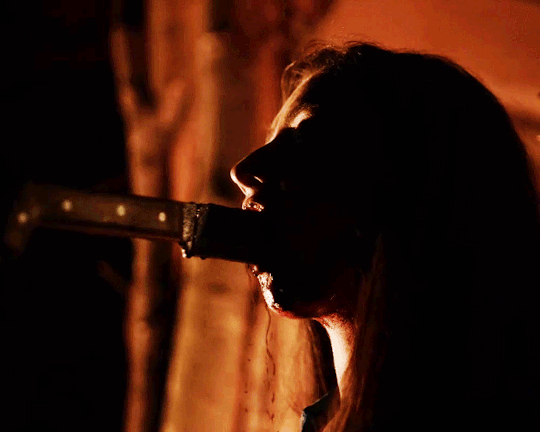
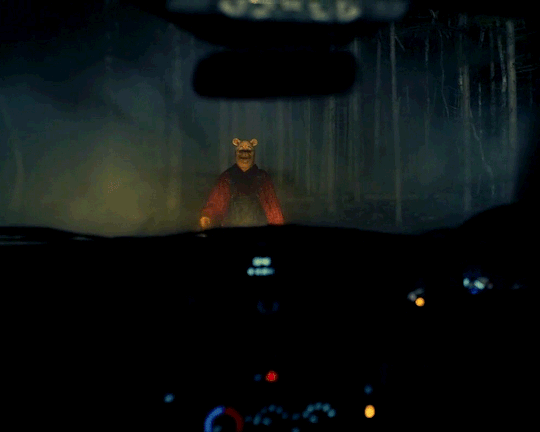
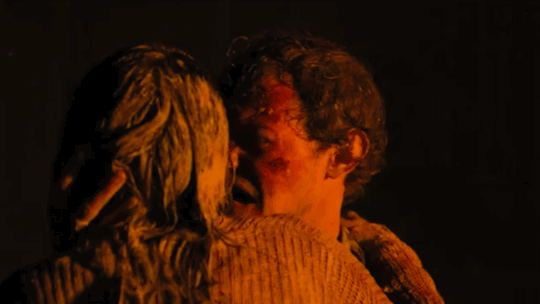
Money was almost definitely the issue. When faced with a movie that was as much of a let down as this one, sometimes it's hard to remember to take those things into account. Less money, less cast, less effects. 'Shoe-string budget' might even be too generous to describe what the cost of this movie. But it isn't necessarily about the money you have, rather where that money goes. I think Tigger should have been budgeted for. Maybe lower the body count, which saves on actor pay, costuming pay, and special effects pay. Keep it to one or two simple locations with minimal travel. With unfathomably small budgets like the one for Blood and Honey, it might have been beneficial to tighten it up even more. Shrink it, contain it, make it more intimate. Blood and Honey felt too big for its britches. Perhaps there should have been more focus on the costuming, makeup, and effects that might have gone into our childhood comfort characters. I'm very passionate about the practical elements in movies, so these designs were totally disappointing to me.
I've spent a lot of time talking about things this movie didn't do, which can be a bit unfair considering the constraints of budget and production. I try my best to take movies as they are presented, but Blood and Honey gave me so little it makes it easy to talk about what might have been. Why not this, why not that. But let's get back into what the movie was.
The story, unfortunately, wasn't strong enough to make up for the lackluster creature designs. In typical Christopher Robin fashion, he eventually grows up and says goodbye to his friends. He had always brought sweets and tea with him, but upon his cessation they can't provide for themselves, go crazy and, for lack of a better term, become cannibalistic. They eat poor Eeyore.
Is it cannibalism if they're eating a member of a different species? Not really, but I think that's probably the best way to describe it. They eat him because they begin to starve.
Pooh, who notoriously scavenges for honey and should be hibernating anyway starves. Rabbit, who has his own garden and would stockpile for winter starves. Gopher would eat roots, Owl would hunt for small prey, both starving. Kangaroos eat mushrooms, among other things, and they both still starve. Piglet is potentially the only ones who would have difficulty providing for himself just because pigs need a rich diet and a lot of food. But in the source material they have a communal table, and even feed Christopher Robin. But there's no gory family meal here; it turns out they cannot live without the food he brought with him. Real animals can and do become food dependent on humans, but these characters are not fully animals. The movie even tells you so, calling them abominations. They have human intellect! They have a community. They built houses. They swing knives and hammers around with deadly intent. But they can't do farming. Seems they can eat ass with the best of them, though.
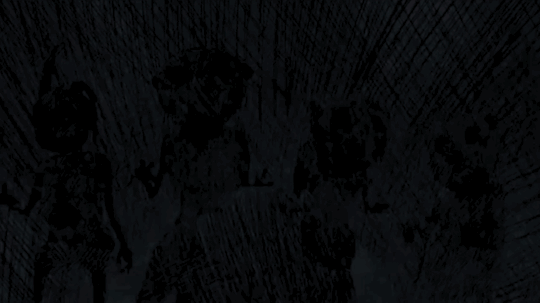
While we see Eeyore's munched upon skeletal remains, there's no explanation for the rest of the group being missing. Were they eaten, frozen to death, or killed by a hunter? If the movie did tell me I ended up missing it, which was no surprise because guess what? They do not speak! They don't fucking speak! Why isn't killer Pooh "hoo-hoo"-ing? Where were the rumblies in his tumbly before he ate someone? That iconic voice coming out of a huge man-bear as he kills? Come on. I mean it's right there! Honestly I felt like so many issues with this movie could have been solved if they were given dialogue. Every member of the Hundred Acre Wood talks, that's just part of it.
Christopher Robin wasn't just imagining his adventures either. His friends are real. So where was the camp? Beloved early childhood characters turned killers is such a fun idea, so where was the fun? Why did it feel like this movie wanted it to be taken so seriously? It's Winnie the Pooh: Blood and Honey, not Deliverance (1972).
Upon being "abandoned" by Christopher Robin, they grew resentful of humanity and eventually turned into killers of people, not just depressed donkeys. This makes enough sense, except they're active serial killers and have been for what seems like years. They plot, kidnap, and torture with intent and there's a slew of unsolved murders and disappearances in the Hundred Acre Wood. This suggests the Wood is traversed regularly enough to at least find some bodies. So why does anyone go there anymore? How many people have to die for the Wood to be fully canvassed? Why was there a huge mansion right on the edge of it, which our completely forgettable human characters rent?
Given the evidence, it should have been easy enough for law enforcement to find their little encampment, it isn't like it's hidden or invisible. Plenty of characters go there, too, so it isn't only accessible to children. That could have been interesting, if you needed the eyes of a child to get there. Plus, it would have forced the introduction of a character who's representative of the source's target age group, making it easy for the viewer to relate to their younger self- the version that actually watched or read Winnie the Pooh. Everyone in Blood and Honey is a young adult or older.
By far the biggest travesty of all is that Winnie the Pooh: Blood and Honey isn't a monster movie, it's a slasher movie. Every one of Christopher Robin's friends is an animal, but the filmmakers decided not to make a monster movie. Why even bother with the property, then? Pooh is running around with knives and weapons, doing hand-to-hand combat, drowning people. Folks, he drives a car.
He drives a car.

Insane. Absolutely insane.
I mean what in the hell? They are strange chimeras, amalgamations of human and animal. Blood and Honey leaned so heavily into human that they hardly seemed like animals at all. This also doesn't make much sense within the logic of the movie. Pooh can drive a car and stalks kids with the intention to scare, torture, and kill them, but god forbid he figures out scavenging or farming for food. Sure, Piglet munches down on some people, but only after tying them up or fighting them. A home invasion slasher movie. Villains in proverbial "Cabin in the Woods" movies can be basically anything- killers, monsters, aliens, animals, cannibals, demons, witches, gods, the Devil, viruses, zombies, werewolves, ghosts, mistaken perceptions, oneself, children, mental instability, Nazis, Kathy Bates- see what I'm saying? It was always going to be a cabin in the woods movie because it's set in the Hundred Acre Wood. That didn't mean it had to be a slasher.
Perhaps the filmmakers thought how serious it was would be funny enough on its own; it shouldn’t have been hard to make this satire. But if that was what this movie was going for, it didn’t land for me. There just wasn't much use of the source material. That was honestly the most frustrating thing. I kept waiting, and the Winnie the Pooh of it all never made an appearance. Why didn't he get caught in a window? Why wasn't he gulping down human blood from a honey jar, the label 'honey' crossed out for 'human?' Why couldn't he like, I don't know, control bees or something? Piglet turning into just a wild boar would have done it for him. Imagine Pooh and his pet Piglet on a leash. Hilarious, weird, a joke on how attached Piglet is to Pooh. The things that could have been!
Still, there were plenty of kills with plenty of blood, which was a saving grace. They had decent enough effects and were all pretty unique. Some of them are right gnarly, and that's always a plus for a horror movie. While many of the kills did make me laugh, just having the killers be Pooh and Piglet wasn’t quite enough. It was a constant string of asking 'what?' because there was just zero connection to Milne's works. They didn't talk so there were no zingy one-liners or tongue-in-cheek references. It was played too much like a straight slasher movie. Again: why a slasher and not a monster movie? Crush my dreams, why don’t you. I think it wanted to be satire, but where were the references? Where were the jokes? Where was the camp? Where was the hightened reality? I kept rolling my eyes: 'That's guy's not Winnie the Pooh,' 'What does this have to do with Winnie the Pooh?' There was no Pooh or Piglet about them, they were just dudes in masks. It's just a mask. It's just a mask!
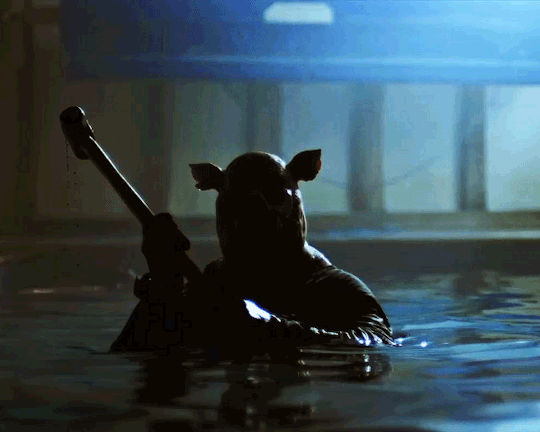

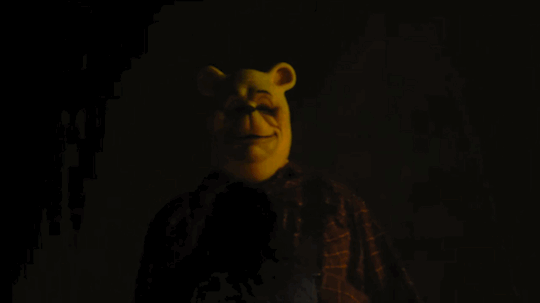
They could have been switched for the guys from You're Next (2011) and I don’t think you would have needed to change a thing. The killers in You're Next even wear animal masks. So what's the point of having it be a Pooh property? There was no reason for them be from the Hundred Acre Wood other than to say they were. It felt like first-time writer/director/editor/producer Rhys Frake-Waterfield had written a slasher movie, then once Winnie the Pooh entered public domain he just tossed them in without changing anything. He also maybe took on too many jobs for this movie.
There's low budget, and then there's doing four different jobs yourself. Outside opinions and suggestions are essential to movie making. Producers think about what will attract audiences and money. Editors have an additional artistic eye and the conversations between they and the director almost always make for better movies. Quentin Tarantino used editor Sally Menke in every one of his movies until her passing because she got it. The original Star Wars trilogy was probably saved by George's then wife and editor Marcia Lucas if the post-divorce prequel trilogy is anything to go by. (Please don't come for me Star Wars fans.)
These were collaborations. A director needs outside opinions. Needs more than one pair of eyes looking at the final product. That goes double if they are also the writer. Killing your darlings is hard if no one is telling a writer where their own story is lacking. It's good to have a singular vision, but movies by nature are a cooperative work. So where was the behind-the-camera cooperation?
And just a little thing: it's the Hundred Acre Wood, singular. Not the Hundred Acre Woods, plural. Steam is coming out of my ears. Stuff like that kills me dead, because it makes it seem like no one even cared enough to check the name. And if they did, they didn't care enough to make it right. Why make it Winnie the Pooh at all? What's the point if you aren't going to pay attention to the details?

Despite my dislike, I truly hope Rhys Frake-Waterfield keeps making movies. It’s clearly something he wants and loves to do. I just think in ten years he’ll look back on this movie and cringe. Because it was cringe-worthy. I don’t enjoy disliking movies like this because the people who make horror tend to be very passionate about it.
I wanted this movie to be good, or at least a funny, entertaining bit of trash horror. I really wanted it to work. For a wide array of movies, people go in expecting it to be good. With most horror, however, people go in expecting it to be bad. See the difference? I try hard to give every horror movie I see the benefit of the doubt: sure it looks bad, but until it comes out I’m assuming it’s good. Because you never know!
Then I found out whether this movie was a good one, a so-bad-it’s-good one, or a bad one.
This movie was bad. For me it wasn’t even so-bad-it’s-good. The heartbreak of it all. I’m sure there’s more to be said, but I’m just sick and tired of even thinking about it; I this movie was that much of a let down. Not for me. I’m angry over it, frustrated, and a little bit baffled. How did this happen? I grew up with Pooh and friends, like many of us did, and I think we deserved a better horror movie about them than this one. I just kept asking why. Why, why, why.

How to even end this write-up? I didn't even mention how bored I was for the duration, either. Eye-rolling. It just stunk. It was hardly good for a laugh, there was no point to it being Winnie the Pooh, no references, no satire, no camp, no fun, no point of view, no nothing. It was a big fat wad of nothing. The idea was so wasted on this movie it felt like it wasn't used at all. Honestly it might have been better if it had just been two regular-degular killers. This movie was so disappointing and I disliked it so much I'm going to be a bit mean: Rhys Frake-Waterfield should be embarrassed. I would be. He just didn't seem to know how to use the characters.
Am I being a bit harsh? I don’t know, probably. But it just didn’t do it for me. Should I tell you to check it out? I don’t know. Maybe stoned? But I was stoned so what does that mean? Perhaps it was so not my taste that I’m missing something. I hope there are people out there who totally love this movie. Unfortunately, I'm not one of them.
I'd give this a zero if I didn't believe in my self-imposed rules about rating on one to five. To that note, in my book Winnie the Pooh: Blood and Honey (2023) gets an obvious 1/5.
#Winnie the Pooh: Blood and Honey#Blood and Honey#horror#spook study#movies#film#review#movie review#my writing#long posts about horror#1/5#Winnie the Pooh Blood and Honey
1 note
·
View note
Text
The radio. What is it about the radio? Even as technology has advanced, becoming something almost unrecognizable from the golden age of radio. The original radio play of War of the Worlds was aired in 1938. Let that sink in. The Buggles may have said it best in their 1979 bop: video, did indeed, kill the radio star, but that hasn’t stopped them from appearing in video.
There are so many great movies us radio as a foundation for the plot. Nightmare Radio (2019), The Texas Chainsaw Massacre 2 (1986), and The Vast of Night ( also 2019), a movie I should really get around to doing a write up on because I loved it, all feature deejays as main characters, and they are far from the only ones to do so. On top of that, arguably every ghost-hunting movie ever made can wiggle its way in there, most feature some kind of antennaed communication device, and often use radio as a ghost/demon conduit. For whatever reason, we all decided and agreed that the dead can speak through the radio.
Pontypool (2008) certainly isn't John Carpenter's The Fog (1980), but nothing ever will be.
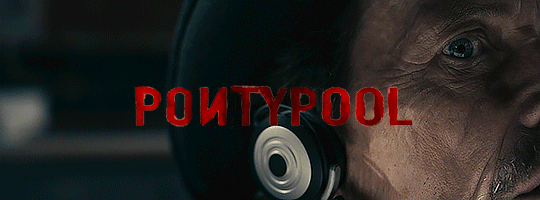
Despite the lamentable death of the radio drama, horror has never let the radio die. Those little boxes litter the genre. They remain steadfast, still showing up in movies even as Spotify takes over the music streaming scene and narrative podcasts attempt to fill the void left in the wake of live radio plays. There’s just something about it. Something alive. The fact that when you listen to radio, you’re listening to someone speaking to you in real time; someone is turning tables and transitioning between songs or segments in real time. Even live television can’t compare because it’s performative. Radio is alive, which means it can be dead- have dead air. If a person stops talking or spinning tables, you won’t be hearing anything until the emergency tape eventually kicks in. There’s just an activeness to that. And an aside to say rest in peace to television dead air; in my heart, no “6 Hours Soothing Sleep Static Sounds” video on YouTube will ever do you justice.
Radio is more personal than all that. Someone is speaking to you, that’s simply the way radio works. "If you’re just tuning in, listeners," that’s you. It feels personal, contained, call the number and talk to that disc jockey to win tickets, to offer your opinion, to be on the radio right then and there. It's a slice of fame: everyone listening is hearing you, learns your name, is reacting to what you're saying. I’m sure it’s thrilling. I've always been too nervous to even try to call in.
Now I'm a sucker for a bottle movie, so I'm sure you can imagine my delighted realization when it became clear that Pontypool is one! Talk about radio being personal, save for the first couple of minutes where disgraced shock jock Grant Mazzy is driving to his new job in the middle of nowhere Canada, we never leave radio station. One big room? Seems pretty personal to me.
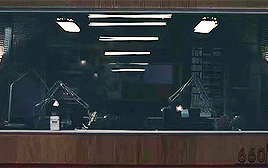
For those of you who might be unaware, a bottle film, from ‘ship in a bottle’ figures, is a movie or episode of television that remains in the same location for most, if not all the duration. While characters may come and go, we, the viewer, remain. Hitchcock’s Rope (1948) and Rear Window (1954) both qualify, as well as the more recent Circle (2015), and Hush (2016). Horror certainly doesn't have a shortage of them, either. While there are bottle films which take place in locations with more than one room, like Funny Games (1997 or 2007, both great) or Clue (1985), I’m preferential to the smaller locations as exemplified in Pontypool. I like the claustrophobia, the containment, the way these movies can make both viewer and characters feel like the walls are closing in. I like the visual representation of being being stuck, the endings often culminating in the escape from containment. Give me a movie in a single room and I'm practically in love. There’s just something about it- breathing the same air as it gets stagnant, seeing the same sights, stuck with the same people. It’s The Yellow Wallpaper effect. The movie operates on a simple premise but leaves a lot to unpack if you're in the mood for contemplation.
Pontypool is a pandemic movie a 'zombie' movie, colloquially speaking. If people never die they aren't zombies, but let's not get into that right now. The movie leaves whether people actually die over the course of the illness taking hold unclear. While no one is rising up from their grave, they still become mindless killing machines who eat people. One way or another, the infected remain up and about when a human would definitely be dead.
Still, Pontypool does manages to set itself apart from the crowd: the infection is spread through words. Specifically English words. The idea itself is interesting enough to cover the convoluted explanation the movie gives, but that might just be due to the fact that it's almost impossible to wrap your head around. A disease transmitted through words? How the hell does that work? Just thinking about it gets my mind whirring.
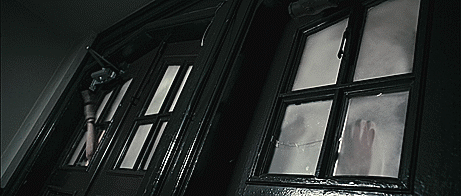
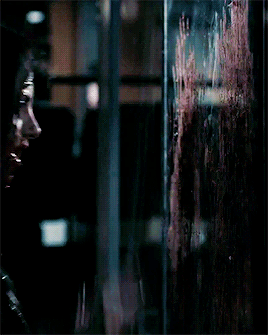
The film follows the early morning workers of the Pontypool radio station. Grant Mazzy, who has found himself with a dreg of a job after his untoward personality and “take no prisoners” approach to hosting got him fired and basically blackballed. Tech assistant Laurel-Ann, who is a veteran for seemingly no reason, is amused by his antics. Station manager Sydney, a middle-aged woman who is tragically and typically devoid of a personality, is decidedly less so. In addition to the on-screen roles there’s another impactful character who is only heard through call-in, “eye-in-the-sky” helicopter reporter Ken Loney, whose helicopter is actually his beat-up car on top of the tallest hill in town.
A bit into the movie we get the irreputable town doctor Mendez, who miraculously made his way to the station despite his office being the first location we hear about being overrun. Running, violent hordes that are shown to chase people and the greying Dr. Mendez makes it out and across town, no explanation offered. We're talking breaking down the doors and piling on top of one another like a small town World War Z (2013), or at least that's how the situation is described. If you aren't contemplating the workings of the movie's universe, like my aforementioned fascination with how the infection works, "how" questions can be killer. For Mendez's entire appearance I just kept thinking, "how the hell did he get out of there?" It's easy to get caught up in things like that and my suspension of disbelief is no more. This is a reoccurring problem for the movie, which I'll get into more later.
Since the program is a morning news show, the group starts off by reporting what is only considered news in itty-bitty towns like Pontypool, Ontario, Canada. Mazzy clearly hates his job, drinking at the crack of dawn and making fun of the townspeople as news comes in. He tells nothing stories because there's nothing to report on. In a previous broadcast which serves as the opening narration to the movie he reported on a woman's lost cat. It's hard-hitting journalism, folks. The first report of the day of the film regards an altercation with the police with an ice fishing shed.
After taking one too many mild crack shots, Sydney chastises Mazzy. He jokes about alcohol being involved in the situation, which ended as soon as it began. But he finds out through Sydney that one of the men is indeed an alcoholic. She implies everyone knows it, but things like that remain spoken of only behind closed doors. It's later revealed eye-in-the-sky Ken is a pedophile. Well, not exactly, the people in town just all keep there kids away from him. The dirty laundry is to stay in the basket. So, whether he likes it or not, the people of Pontypool need their simple news- school closures, weather, traffic. Particularly during blizzards, like the one everyone is caught in for the movie. Power is likely to get knocked out, which means no television news. The first iPhone came out in 2007, only a year before the movie’s release, so smart phones are still a rarity. What you have is your landline, and not much else. It’s radio news, or it’s no news.
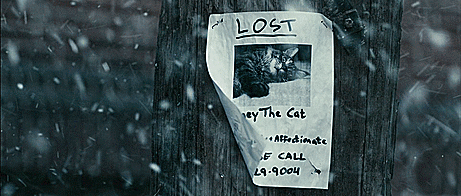
Ken Loney reports on what is first deemed a riot which is of course slowly revealed to be a pandemic that turns people into violent cannibals that creepily parrot words and phrases. A bit into the growing situation, a transmission in French intercepts their air time which urges everyone to stay inside, not speak, to particularly avoid pet names such like ‘honey’ and ‘baby,’ ending with warning not to translate the message. Oops, too late, it’s been translated and Mazzy relayed it on air. So much for that warning. Also, lest we Americans forget, Canada has two official languages, one of which is French. It's reasonable, then, for the movie to have characters that know at least a bit of French, rusty though it may be. Since it's only English that is infected, other languages remain safe. That is, if they need to speak at all. Pen and paper are pretty good workarounds too, but still they chatter away even after Dr. Mendez's entrance. His first bits of dialogue include him openly stating he believes the illness is transferred through sound, and English. We can extrapolate through the characters broken French from later in the movie that Pontypool is predominately English-Speaking, thus explaining why the earlier warning was related in French. Anyway let's keep talking.
As more of Ken’s scattered reports come in, he relates his escape from the oncoming hoard, subsequent hiding in a barn, and the sight of a boy he knows crying out with the voice of a child while missing an arm and despite the fact that he should be dead. The employees of the station become a bit more frantic as well, unable to get much information coming from the outside. As an additional strain the Station has no windows, so they are unable even to see what is happening.
This limitation seeds disbelief, leading them to open the front door and incidentally inviting the infected inside. Sound is what draws the infected, so they play a recording to the loudspeaker outside: Sydney Briar is alive. This draws the group back out. Laurel-Ann becomes infected, and Mazzy, Mendez, and Sydney take shelter in the sound-proof radio booth. Mendez hypothesizes that only certain words are infected, and that one must ‘understand’ the word in order for the infection to take hold. What in the world that means is sort of explained, but really it's anyone's guess.
Time passes to the sound of Laurel-Ann relentlessly banging her head against the plexiglass window to the booth. After her continued self mutilation, what’s left of their young station tech dies. Eventually, and I do mean eventually, the remaining group decides it might be best to stop talking after Dr. Mendez comes to the realization that it is only certain words of the English language which transmit the disease, the first indication of which being the host’s repetition of an infected word. They begin passing notes to communicate. But when Dr. Mendez exhibits the beginning signs of infection, Mazzy and Sydney leave him alone to the booth. This is the beginning of the end, which I’ll leave to you to watch on your own.
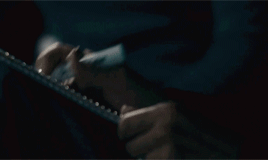
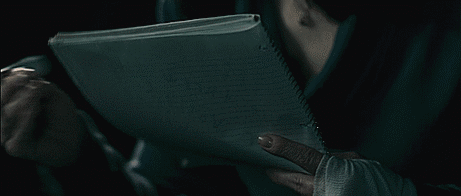
So what is Pontypool saying? A movie set in a radio station of which the very foundation is the power of sound, where radio itself is practically ground zero. Who knows what words may set the infection off. Did Mazzy, who as far as we can tell isn’t infected, start this whole thing with his half-truth reports? What this movie hedges its bets on is the power of language and of sound. Horror is nothing without sound, and we don’t need a movie about deejays or radio to know that. For tone setting, for jump scares, for themes, audio can make or break a horror movie. Who could forget the the crazy and wildly listenable soundtrack to Suspiria (1977), the sharp iconic sting in Psycho (1960), or the looming staccato of the themes from Jaws (1975) and Halloween (1978)?
For those of us whose hearing remains intact, sound has power- whether you’re conscious of it or not. It effects everything you do, and everything you experience. Mazzy’s show is a news program on top of everything. English as the infected language, which doesn't feel like a coincidence. Casual half-truths with little to no foundation. While the movie takes place in Canada, Americans should be able to relate much of the premise to their own experiences. When did the news become a thing of opinion? Why has fact become so convoluted? How did it come to this? Where is the impartiality that begets news in its purest form, as a way to conduct information? The dissemination of not only ideas, but ideals, is perpetuated in part by news media. How many of us have tried to wean an unsavory relative off of Fox? I’ll do you one better: how many have made fun of and decried shock jock radio host Joe Rogan?
Information is passed through language, and the bias of those reporting it then infects the listener.
Pontypool doesn’t reflect on this enough in its runtime, and most of these musings are my own. derived from but not included in the movie itself. While it may touch on the fear of misinformation and the doubt that can come from being unable to witness things for yourself, I feel it could have been a bit more keyed-on, a bit more contemplative. Maybe even a bit more heated. There was very little passion. It runs around itself, in a way. Most of the movie is just the characters repeating the sentiment of not believing the things that are being related to them are happening, and then, once they’ve confirmed it, they can’t believe it.
Pontypool spent a good portion of its runtime with the characters asking if the situation was real. That can get tired very quickly, and it did. We know it’s happening because we’re watching a movie. Stringing a viewer along with character disbelief loses its efficacy pretty quickly. While character reaction may be understandable in a semi-realistic way, we aren’t watching the movie for realism. It’s performance. The characters need to move a bit faster, the actions need to be a bit bigger, the body has to react a bit stronger. It’s a horror movie. Pontypool just spent too long on disbelief, which caused a disconnect. It stated to feel winded, despite only being 6 minutes longer than my ideal horror movie runtime of 90 minutes.
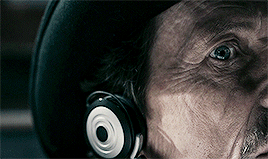
I think they relied on all the weight to be carried by the concept, which I thought was so interesting. Unfortunately my interest ended up being only on the premise. Almost as if presented as a piece of news itself, Pontypool didn’t have much of a point of view. The script just didn't live up to the idea, and that drives me crazy. Mazzy’s a shock jock, but whether he was an asshole or a martyr is never really answered. What exactly was he fired for saying? We never find out. Why wasn’t there a brief comedy relief moment where he just devolves into speaking only in swear words? Of course, he doesn’t swear much because of the FTC but when they stop broadcasting? Or when he starts to lose his cool?
Sydney knows everyone in town and all their dirty laundry, is she maybe a little meaner than we had initially thought? Or actually, is there anything interesting about her? Because besides being the “mother” figure who admonishes Mazzy and scolds Laurel-Ann, there wasn’t a lot going on. Embarrassingly, her only defining trait is that she cares. That's just bad writing.
Laurel-Ann is a veteran, but why didn’t she have anything else to show for that other than the one line, “We have enemy combatants.” This last one really grinds my gears. The fact that she was a veteran went nowhere. No badass moment, no kicking zombie ass, no bodying them in defense. It’s a pandemic movie; there’s always an excuse to have your army brat character do some stunts. She was young too! She looked like she was in her 20s. Why was she dismissed at such a young age, or was she a reserve? Obviously she worked in army radio, but she looks fit enough. And if she did work in radio, why did they give her that army brat line and have her move like she was infantry? Or, if she didn’t have a reason to know hand-to-hand combat, why wasn’t there a little joke about that?
And Doctor Mendez. Why was he allowed to still be practicing despite writing phony prescriptions, a crime which could potentially prosecuted as a felony? Why does he still have a license? Sydney knew about it, but did no one tell the police? There's keeping personal matters private, but I don't think this one counts. And why, when they realize it’s the English language, do they not immediately switch to French? Why don’t they start to write notes sooner? For the number of times someone said they should stop talking, they sure kept on doing it.

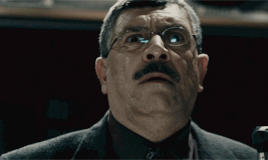
I’m getting frustrated again just thinking about it! Questions like these are easy to answer with standard movie dialogue. Plot holes, failed potential, trip ups, whatever you want to call it, this movie had a ton of them. It’s also a high-stress environment. So why isn’t anyone having a real argument, whispered or otherwise? You’re telling me stuck for hours in the same room with the same people wouldn’t beget a real argument? Why is no one scared to the point of anger? Anger, confusion, fear, it just was so pale. And here I go again! I can feel my muscles tensing the more I mull it over.
Pontypool took itself so seriously the fun was just sucked right out of it. The devil is in the details and nothing is more irritating to me than tiny unanswered questions. You can leave your overarching explanations vague, have a weird ending, make it whatever you want in my opinion. But you better answer how the hell Dr. Mendez escaped his office when Ken Loney’s first report included a crowd gathering outside the building. I mean as far as the viewer is concerned, it was the first place. And the infected people are strong! The person who ended up getting Ken busted through a barn door! A movie shouldn't bring up questions like these unless it intends to answer. Where's the payoff? I want to grab this movie by the neck and shake it. I don’t even have the words. Like come on. Ugh! I’m getting heated, girl. (Or guy…or other…you get it.)
Honestly this whole review probably feels incredibly disconnected, but that’s the split for me about Pontypool. I adored the premise, spent time thinking after it ended about the world it created, the rules, how one might go about counter-acting it, what does the virus actually do to someone. But the movie itself? Completely wanting. Of anything. It’s just such a bummer because the idea, at least to me, is so cool.
Not particularly funny, scary, or contemplative, I have to go on what the movie presented, not just the concepts. I could see the good movie in there, but I didn't see it on screen. Look, I'm still thinking about it much after watching it which is only a good thing in terms of staying power. But we also remember bad movies and tend to think on those just as much as the good ones. Still, Pontypool is quite the popular movie and continues to be well received to this day. I'm definitely in the minority when it comes to my dislike, so don't shy away from giving it a watch. As of now (December 20) it's streaming on Shudder. As for me? Well...maybe the book is better. It usually is.
Split down the middle in a case of execution not living up to the concept, Pontypool (2008) slips by with a 2/5.
#spook study#pontypool#2008#horror#film#movies#review#movie review#my writing#long posts about horror#2/5#pontypool 2008
0 notes
Text
Humanoids from the Deep [a.k.a "Monster"] (1980) starts with every content warning you can possibly have in a movie. Don't bother checking Does the Dog Die, because if you are someone who needs to check, this movie isn't for you. Humanoids from the Deep explodes onto your screen, starting with the killing of a child, resulting in an ungodly amount of blood in the water, and the subsequent explosion of the boat he was on, taking his raving, sobbing father who just watched his son die down to the depths with him. Not to mention a few deckhands for good measure. Following this up we have the visible death of a dog, followed by a shot of his mutilated corpse, then being shown the corpses of at the other fishermen's dogs sprawled all over the dock and their boats. Top off that rapid succession with casual racism, using a slur for Native Americans that some may not have even heard, and there's little room for doubt about what kind of movie you're about to witness.
If you even make it that far.

The movie isn't one for resting, however. The classic call of teenagers having sex on the beach is one heard loud and clear by the titular creatures. Just because they're kept mostly hidden, as is the usual case when it comes to lower budgeted horror, doesn't mean you don't see exactly what happens between the proverbial sheets. The filming leaves no room for questioning: a young woman gets abducted and sexually assaulted by a monster, so clear you can count the thrusts. Humanoids from the Deep straddles the hard line of 80s schlock and full exploitation, and it's swaying from side to side drunk on its own craziness. Depending on the night, or the person, it could very easily fall to either side.
While we don't get a nice clear view of the monsters upon their first introduction, where would the fun in that be, that doesn't mean we don't get a good look. A lot of B-Horror is embarrassed by their creature effects, latex prosthetics and masks mushed with paint and goo in an attempt to make the monsters look scary. If you're lucky, you'll get some tentacles waving around by fishing line. But the full body suits of Humanoids are pretty gross and definitely gross enough for the crux of their existence. It's a nice change of pace to see a monster that actually looks good enough to do what it does. Not great, but definitely good enough.
Not only that, the movie swings hard with gore effects. Blood and guts abound in Humanoids, so if that's your bread and butter, you'll have plenty at the table. It's definitely a pleasure when a lower-budget movie puts the money into grossness. A lot of modern horror has a strange sense of dryness to it- even the blood looks clean. But fish monsters at a fishing town with a fair going on? All the juicy goodness you could be looking for is right here waiting for you.
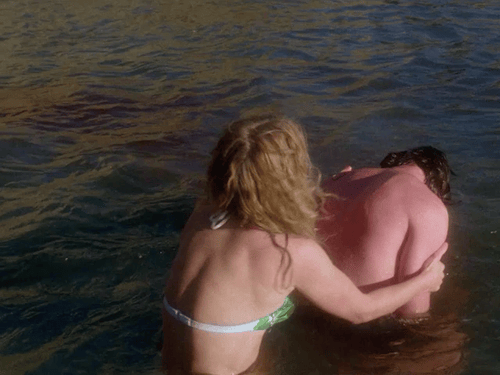

When it gets down to the movie itself, Humanoids fully places itself in the film oeuvre of the sexy female scientist with Dr. Susan Drake. Stunningly beautiful and stunningly frazzled, intelligence and dogged pursuit of the truth is all of a sudden incredibly hot. Yet, unlike her contemporaries, Dr. Susan ends up being appropriately dressed, for the most part. She wears full outfits that are quite modest for a movie in which its very premise is monsters attacking and sexually assaulting women. When she explores, trying to find the answer to this hormonally mutated mystery, they have her in a full yellow fisherman's garb and boots tromping around in the water and mud.
And tromp around she does, much to the chagrin of the newly implanted cannery she's working for. That's right! She's working for the very company, cleverly named "Canco," that's the direct cause of the monsters. Far too literal to be ignored, the movie starts off with one of the leading men stating the cannery will ruin the town, and he certainly isn't wrong. Going against the grain for company-employed scientists in horror, scientific integrity becomes the sexiest thing that Dr. Susan brings to the table. She doesn't care who did what, her employer or otherwise, she wants to solve the problem because of the ecological implications of crazy fish men running around raping unsuspecting teens who all seem to think the beach is the place to be when it comes to sex.
The scene surrounding the second couple of teens is one of the craziest seductions ever put to film. The young man seduces a lovely young lady with his ventriloquist dummy.
It works. It just. It works?
Well, works up to the point of those good monsters showing up and crashing the party. And they're not the only ones who fall victim to these crazy fish. While the monsters collect ladies they impregnate (if they even survive the initial attack) that doesn't mean they don't kill indiscriminately. And there will be blood- galore. Spraying, shooting, tearing, ripping, bashing, spurting, flinging, flying, you name it. It's gushy and wet and and it all looks so damn good. And the Humanoids certainly do not care who is subject to their wild ways. Brothers, boyfriends, friends, women, children: if it breathes, the Humanoids are coming.



While the plot may be thin, how much do you truly need when walking full tilt into a movie called Humanoids from the Deep? Hormonally enlarged salmon being eaten by some other big fish out in the sea and those fish turning into air-breathing bipedal sex maniacs in no time flat? Why not. And, despite all the sleuthing and mystery-solving and heavy handed dialogue about the displacement of indigenous populations and destruction of small town America, the climax at the annual festival is definitely full of climaxes. Some brain-bashing and gasoline later, what we know of the Humanoids have been defeated. Toss in a classic horror end-of-movie stinger and the movie wraps.
So what does a movie like Humanoids from the Deep have to offer? This is the kind of movie your mother would tut-tut at, or yank from VHS and send you to your room with a harsh word, and maybe that's all that it is. Humanoids feels secret, subversive. As horror comes more and more into the light of public acceptance, so too have harsher and harsher low-budget horror movies touting "Old-School" appeal. It's movies like Humanoids they're referring, but what people tend to forget is that there's always more. There's an evil corporation, there's people fighting to help, there's fear and there's pain and there's dread. More than hack-and-slash gore effect after gore effect without anything else going on, Humanoids from the Deep keeps its silly little plot clipping right along for all 80 of those minutes.

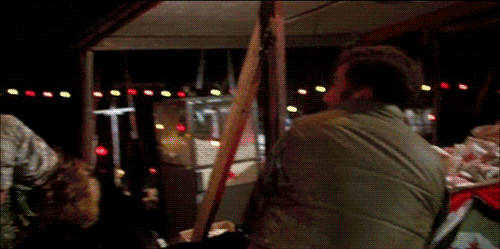
It seems there's some disconnect with what "Old-School" horror was and did. Modern day effects and society means things you could never have shown when Humanoids came out is now being called "Old-School." Humanoids is shocking not only because of what it presented, but because of what it couldn't present. Imagination is the strongest producer of fear, after all. When the limits are pushed and pushed and broken completely, there's nothing left of the original dark-alley appeal that made these movies so cool. There are some things in Humanoids that might have you shocked even today, and that's staying power. Will we be able to say the same for the shock violence being put to film today? Will we be able to see a monster riding a carousel filmed in 2023?


Humanoids from the Deep is a perfect example of what all those middle-aged men call old-school horror, but don't let that deter you. Ignore the film bros and holier-than-thous and, if you have the stomach for it, give Humanoids from the Deep a try for yourself. Be grossed out, laugh, have fun, because that's what movies like this are for. They're for late-night slumber parties with your friends and midnight screenings in the woods at night. Watch it while you're camping or while your out on a boat. Watch it with all the atmosphere you can and remember how fun fear can be.
Sure, it may not reinvent the wheel, but this collection of creature and gore effects, a sexy female scientist, a rugged Native-American hero, a bunch of racists getting what-for and a bunch of innocent women being attacked is certainly a prime example of everything horror was and everything horror can be.
From well-known schlock producer of the best gutter trash Roger Corman, it certainly won't be everyone's cup of tea. Still, Humanoids from the Deep (1980) gets a fond 3/5.
Go ahead. Live a little.
#humanoids from the deep#1980#horror#movies#film#spook study#review#my writing#long posts about horror#movie review#3/5#put me on a list or whatever but I had such fun the first time I watched it. And sort of every time since#gif#gore
4 notes
·
View notes
Text
Movie List
Movie List in Alphabetical Order:
Text Post - Scrolling Video
Movie List in Chronological Order:
1917-2009 - 2010-Present - - - Text Only
Last Updated: September 1, 2023
0 notes
Text
Can Nic Cage “Nic Cage” without being able to Nic Cage?
Hot on the heels of the return of the ‘killer robot’ movie, Willy’s Wonderland (2021) seized the moment in not one, not two, but three ways. First, they capitalized on the cult status return of their lead actor, second, they created a camp movie in the middle of horror’s current obsession with bleakness, and third, they did all this when "Five Night’s at Freddy’s" (FNAF) was truly reaching its zeitgeist.

Many people went out of their way to see this movie simply because Nicolas Cage starred. After reintroducing himself with a bang in Panos Cosmatos’ remarkably feverish Mandy (2018), he had reminded us that he was indeed a powerhouse performer, all without losing that manic intensity he became known for. So when Willy’s Wonderland came out, a movie about Nicolas Cage beating a bunch of possessed robots to death, suffice to say everyone went in expecting exactly that. But, to rephrase the first question: can Nicolas Cage perform in the style that he’s known for without (spoilers) having any lines?
As evidenced by the movie, we can confirm the Nic Cage Experience™ doesn't need to be accompanied by lines. He does just fine without.
The Janitor, the only name given to his character, manages to both walk his way through his insane night like it’s just another Tuesday, and go totally crazy when the situation calls for it. This balance makes for a captivating and enjoyable performance from Cage, both allowing him to play to his audience and play for the movie. There's a lot of realism in his performance, which for this movie seems almost antithetical. And yet, what is a good horror movie without the actors really living it? The Janitor was told to clean house, and clean house he did; going crazy is just part of the job.


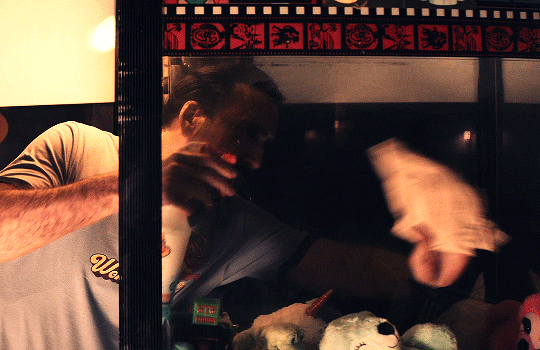

The Janitor being left to his own devices, the plot and body fodder are provided by a competent group of young actors in classic horror movie roles. The sexually active girl and her boyfriend, the boy in love, the best buddies, the final girl. Peripheral adults flank the plot, but just because they’re grown and have struck a deal with the eponymous Willy, who is now possessing the body of a giant animatronic weasel, doesn’t mean they’re safe. These obvious tropes are played up not only by the actors, but by the script itself. Each word from final girl Liv is #inspirational, delivered with the melodrama of a daytime soap. The exaggerated performances and heightened reality of the script make this movie a total blast.
The downside of this is that there are many moments that feel redundant. They split up, kids have sex in the creepiest place, the lost puppy love interest is self sacrificing and over dramatic in his unrequited love, Liv pursues her ideals beyond the realm of reason. Despite knowing full well what has gone on, and is still going on in the arcade, each of the teens makes the stupidest decisions after entering the building. You'd think they'd be focused on getting out, or just not getting killed, but even that seems to be expecting too much of them. There's horror movie stupid, but the young characters in Willy's Wonderland are on a whole other stratosphere of idiotic.
The performances are passable for the most part, though there's barely any screen time spared for character development. Six teens, two sheriffs, one mechanic, and the latest owner of Willy's are all as flat as cardboard. The primary opposite of Cage, actress Emily Tosta's dogged nobility and bleeding heart final girl that she and director Kevin Lewis created rides the edge of a bad performance. While The Janitor has no lines, Liv picks up the slack; not always to great effect. Maybe five "hope speeches" is one or two too many, not only for the film but for Miss Tosta as well. There are only so many ways one can say "we have to do this!" Just ask Sarah Michelle Gellar.
It seems Willy’s Wonderland was founded on the back of its star. Rather than a movie in its own right, it mostly feels like a vehicle for Nic Cage. The plot feels built up around the idea of Cage's Janitor killing possessed animatronics rather than the thrust of the movie. There's precious little story to be had. This is where Willy’s falls flat. When watching a horror movie, you might eagerly anticipate the next kill, but everything else should be working in tandem to create a fully enjoyable experience from beginning to end. There’s being on the edge of your seat for the next robo-brawl, and looking at your watch waiting for it to come. It's unfortunate that the viewing experience contained much of the latter.
At 88 minutes long with eight animatronics to kill and a few dead teens (and adults) along the way, it’s amazing how Willy's managed to have dull moments at all. Averaging out, that's one kill, robot or otherwise, every six minutes or so, not including flashbacks. Yet, the thin plot and difficult-to-match performance of Cage left the screentime spent on the other cast feeling flat and boring. The other actors pushed for the melodrama, which was a smart choice when trying to share a movie with Cage, but the tone was off in comparison to The Janitor's.

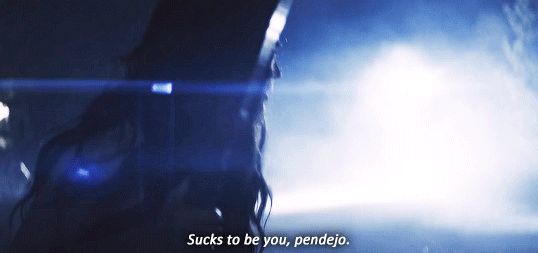
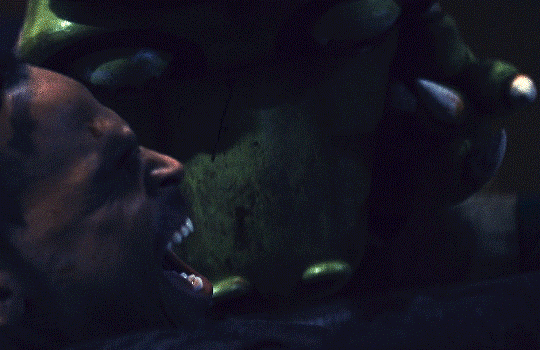
On top of that difficulty, the tension was severely diminished by the large cast of animatronics, which forced the action sequences back to back. Make no mistake, the thrill and fun of Willy's lies in those sequences. But as a movie, this ultra-fast pacing did no favors to the other characters that were charged with attempting to build out a plot when the premise of Willy's amounts to "and then he kills the robots." Don’t expect the dread and fear that is foundational to FNAF, there is little time for anticipation. What could have been a hair-raising movie full of dark corners and jump scares ends up being an exciting romp with little fright to be found, despite its best efforts. There was just too little to build on and too much to do.
Even with these shortcomings, Willy’s Wonderland feels like it did exactly what it set out to do. The movie is fun and violent. Did it do anything wild and amazing? Not really. Will it be your favorite horror movie? A hard maybe. Will you put it on in the background of your Halloween party? Probably!
Without a doubt, the movie made good on its promises of silliness and Nic Cage doing what he does best. It’s a casual watch that one might enjoy seeing alongside their good friend Mary Jane, or with a couple of beers in their system. While not the first to cash in on the evil animatronic craze, check out The Banana Splits Movie (2019) for another round of beloved childhood characters gone wrong, Willy’s Wonderland certainly earned its keep.
It’s exciting to see the return of the killer robot and how it’s being interpreted in the modern day. From Metropolis (1927) to Gog (1951) to The Terminator (1984), and now Willy’s Wonderland, the deadly robot will always hold a special place in the horror canon. Whether possessed by the souls of serial killers or an AI turned rogue, humanity prevailing over machine will be a story told from here to kingdom come. The triumph of the will is twofold. There’s is the triumph of humanity over technology, a story that ensures and reinforces the idea that the best and most powerful form of life is organic, and there’s the success over a being that is supposedly, and in most cases is canonically, smarter than you.
With the way of the world as it is, and the all too dangerous territory the entertainment industry is headed into, it’s no wonder movies like Willy’s pop to mind. Perhaps there is nothing more satisfying right now than seeing The Janitor, a man just trying to do his job, literally demolish the machines that would take his life. The advent of the AI movie is certainly nothing new, though it is distinctly having a moment. While in most instances the solution to the AI problem is a bit more cerebral, there’s no outwitting to be done here. There are no guns or programmers involved in this mess. No one to hack into a system or rewire a relay. This is a killer robot movie for the Everyman. The Janitor hacks, smashes, kicks, punches, and rips these things to pieces. Who would have thought tearing a robot apart with your bare hands would be a relatable fantasy only two years after the movie’s release?
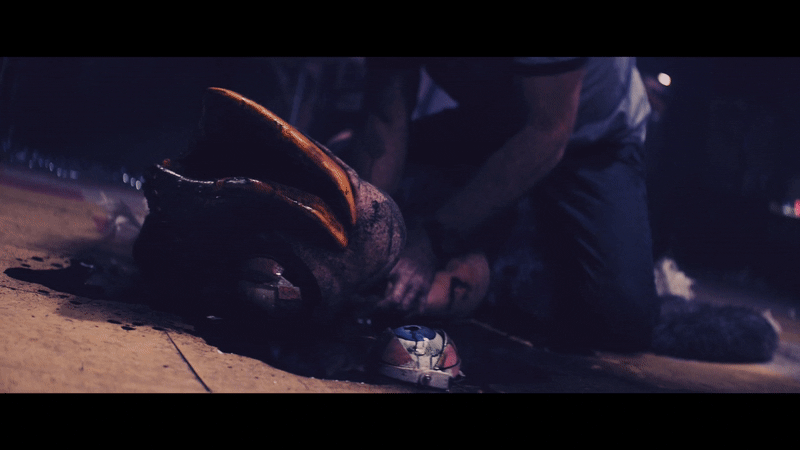
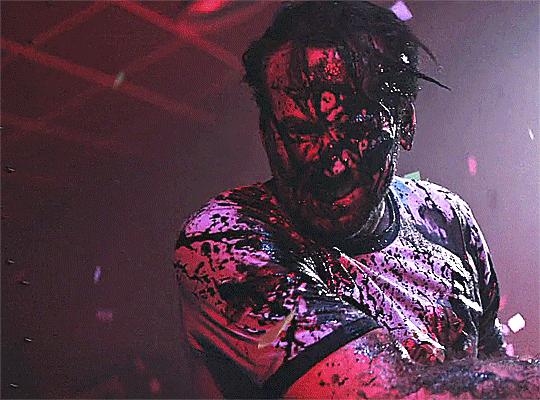

It’s a good enough looking movie, the design sometimes outpacing the execution, and there’s clearly a bunch of love put into it. Anyone who’s ever had a nightmare after visiting Chuck-E-Cheese’s will certainly feel vindicated. The colors move well between the 70s retro look of the Willy’s Wonderland arcade fun zone design and the more neon and vibrant tones used to signify the modern day, the contrast making it visually interesting. The job taking place overnight, the darkness is certainly used to cover some of the movie's visual blunders, and the shaky camera fight sequences can cover a multitude of shortcomings. Still, clever camera work aside, Willy's was obviously filmed on a low budget. Some of the effects will undoubtedly leave you wanting and probably wishing there were fewer evil animatronics. It wouldn’t have hurt the movie to cut out one or two, if only to increase the amount of time and care that could have been spent on the others.
The animatronic cast of characters are all strong, design-wise, and feel just adjacent enough to reality. No one would use a weasel as a children’s restaurant-arcade. Kids get called ‘weasel’ on the playground before they get pushed down. The other characters also feel not-quite-right in the same way. An alligator, a chameleon, an ostrich, a turtle, a gorilla, and the completely off-themed knight and siren. There’s little time to get to know each one of them, which in theory one could do seeing as each is possessed by the soul of a killer. There definitely could have been a bit more about the dead inhabitants, but with so many of them there simply wasn’t time. Is it enough to say they were all horrible child killers? Yes. Could there have been more said? Also yes. Does it really matter when Nic Cage is going buck wild on eight killer robots? That’s up to you to decide.

While it certainly won’t be the best entry in this niche, this movie has absolutely nothing to be ashamed of. It's a silly, straight-forward movie with few frills and plenty of robo-killing action. Whether or not it's your birthday, Willy's Wonderland (2021) wants you to have fun! And you absolutely will.
3/5*
#Willy's Wonderland#2021#horror#spook study#movie review#review#long posts about horror#movies#film#my writing#3/5
8 notes
·
View notes
Text
It is no exaggeration when people say Mario Bava is the father of Giallo; the man who created the style and set the form. When one thinks of a Giallo movie, one may think of Suspiria, or Deep Red, or City of the Living Dead, but the pictures imagined are captured in their truest form in Blood and Black Lace (1964). Perhaps the most Giallo-Giallo movie of all time, Mario Bava lets you know you’re in for a visual treat. This movie is so unfathomably good, it makes all other Gialli look merely like attempts at the genre.

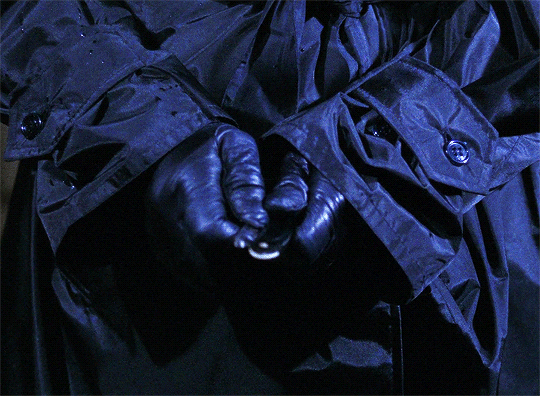
Okay, that is an exaggeration, but it’s impossible to deny how instantaneously captivating and daring Blood and Black Lace is from it’s very first moments. Bava drowns you in with the classic colors of the genre, rich vapid red, and cold, steely blue, but there’s nothing flat about presentation. These colors are constantly being complemented by another excellent color contrast: bright, vibrant magenta and earthy, glowing green. This latter half being used as a secondary pallet, the combination being one of the strongest most woefully underused. Even with this flooded rainbow, no color is desaturated, no subtly of tone is missed. This is all made clear in the beginning sequence- the credits.
Filmed almost as a television pre-show credit, à la The Brady Bunch, Bava displays the main players in the dark, surrounded by almost violent splashes of color. They’re Posing with plants, cages and, most strikingly, bright red mannequins. One actress mirroring hers crimson counterpart, the next actress having a mannequin’s manicured hand around her neck. These were not stills edited into the movie, these are the living, breathing actors standing as still as humanly possible. What cannot be denied, however, is that they are alive. It may be silly to say, but the decision to attack the required opening credits this way was a breath of genius. Even before the movie proper has begun, you are being introduced to an idea of a person, and by the film’s start you feel as though you already know them. They’re not just characters on a screen, they are real people.


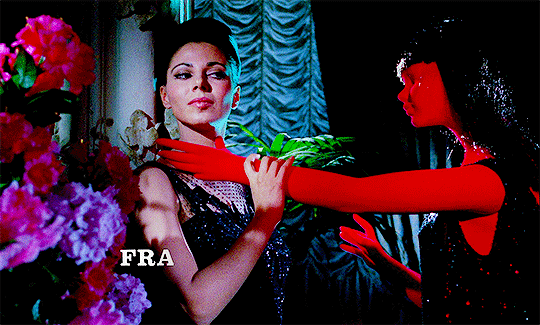
It’s intrigue, it’s mystery. It takes its time, and what may now be considered film-making clichés, it’s obvious Blood and Black Lace is no mimicry. The same way the Godfather is no stereotypical mafioso movie- it made the mold. The revelation of drug habits and affairs, secret illnesses, extortion, scandal, the rich, the camera cutting to every single person as a diary is mentioned, the seedy jazz score delivering purposefully intense stings at the shot of each character’s face. The diary is revealed, and the movement begins.
Taking place in a fashion house, it’s no wonder Black Lace focuses on colors and intensity. A fashion house is a high-stress environment no matter a mysterious tell-all diary. It suits that the lavish views, expertly displayed by tracking shots across dressing booths and down halls, contain as much severity as the secrets the main players are keeping. The slow, still shots pull you into the depths of the screen, and Bava isn’t afraid to use the background as playing space. This allows the viewer to suffer the same anticipation as the characters themselves, offering the chance to see things our frightened model can’t. The mastery of Black Lace, however, ensures you almost never do; not until the exact right moment. Clever camerawork and cluttered, luscious spaces have your eyes darting every which way in search of a killer, amping up the mystery.
But that’s nothing compared to the mid-movie plot development that feels entirely shocking. Just as you may have thought the movie was going to follow one path, it had already misled you; unmooring you from the comfort of supposition and subsequently dragging you along for the rest of the ride. The slow revelation of the killer’s identity, the murders, and the personal lives of the cast continue the movie, and the killer, on, in a string of misfortunes and tragedy.

No one does it like Bava. If you’re looking to introduce yourself to the best of the genre, Blood and Black Lace is the place to start. If you’re a fan of Giallo who hasn’t yet seen it, what have you been waiting for! Made in 1964, what feels like ages before the pique of Giallo in the 70s and early 80s, Blood and Black Lace still surprises with the level of violence and was quite shocking at times. Due to the period there is, of course, very little gore. But that doesn’t mean you don’t feel like you witnessed a brutal killing, front to back, in graphic fashion. Every kill is ramped up to the perfect degree. The execution of each makes it feel like you have seen everything.
Not only does this movie look beautiful and delectable, Mario Bava knows how to film death. It is as though he was made for it. The sequences with the masked killer are violent and sometimes brutally realistic while still being drenched in color. There are, of course, sexual overtones, but the constraints of era serve only to benefit. It allowed the director to push the boundaries of film in the 60s, leaving a perfect amount of the risqué. While later Gialli can feel like they are verging on pornographic, Black Lace titillates and situates itself not in grimy city streets, but in the smoke-filled boudoir. Stunning women being partially exposed, revealing the eponymous black lace underclothes of the English title. There’s a sensuality, a richness, and an intimacy to the whole affair.

What’s left to say? It may well be a perfect movie. If not that, it certainly is a perfect Giallo. You’ll find no citizen detectives here, the police force investigates to great effect, even arresting every single suspect- just as you always scream at the movie for the police to do. The colors are gravitational, masterful and never overworn. The acting is well done, suffering only from the English overdub and actors learning their lines only phonetically. But the overdub too, is recorded with passion and verve. The murders are varied, unique, and violent. The camerawork is sublime. It’s delectable, it feels like a treat. It feels like a decadence.
Maybe this movie isn’t for everyone, but it’s impossible to imagine who wouldn’t like this movie. It’s to die for. Indulgent, succulent, and begging to be devoured, Blood and Black Lace (1964) may sit at the very pinnacle of Giallo film making, and is the perfect example of why Mario Bava is considered the best: he makes murder into art.
5/5
Postscript:
Gialli have a habit of losing their titles in translation, and the Italian names are often better, but is 6 donne per l'assassino, which translates to '6 Women for the Murderer,’ the better title? For once, I think the answer might be no. Blood and Black Lace is far more evocative. Score one for the translators.
#Blood and Black Lace#1964#Horror#Giallo#mystery#mario bava#spook study#my writing#review#movie review#film review#film#movies#5/5
3 notes
·
View notes
Text
From Heathers to Jennifer’s Body, from The Craft to The Burning, from Carrie to Evilspeak, bullies are not something horror is want of. They litter the genre. As antagonists, as antiheroes, but most often as victims. And for good reason! It’s easy to cheer the demise of a bully. The more gruesome or wild the death, the more it is enjoyed. There’s a sense of cosmic justice, a ‘they got what they deserved’ mentality. They’re easy shorthand for inducing sympathy on behalf of the bullied, making it easier to connect and root for an underdog or outcast character. Audiences easily supplicate their own bully for whomever is shown on screen and watch as the silly fantasies of their teenage years are acted out for all to see and enjoy. Assholes are excellent horror movie fodder, particularly if the movie is going for multiple kills. There’s that…
And then there’s Piggy (2022).

There’s a special brand of cruelty associated with young women. It’s complicated and deep-seated, a slithering thing that even people involved in the exchange might not be able to catch. More than traditional bullying between boys, female bullying tends to be more insidious. Maybe that’s why female bullies tend to stick in our minds more, and why those stories remain points of fascination; Carrie is a classic for a reason, after all. There’s a certain level of cruelty between women that feels almost intimate. More intimate than getting beaten up, in any case.
Piggy, Cerdita in its native Spanish, is no exception to this rule. In fact, the movie hits all of the highlights, making it difficult at times to watch. The title of the movie and the star leave no question as to the source of the bullying. Sara, the title character’s real name, is fat. Perhaps one of, if not the most common thing someone can be bullied for. This group of girls snicker behind her back, or just at the edge of her line of sight. They feign politeness in front of her parents before uploading cruel videos with even crueler descriptions. Their eyes are mocking, without a hint of compassion, and there’s nothing quite like knowing that people hate you just because. And, because no one is being physically harmed, there’s almost nothing to be done about it. This is made worse by the fact that one of the bullies, Claudia, was once a childhood friend. Both Sara and Claudia still have their homemade friendship bracelets from those sandbox days. But even Claudia is one false step away from being bullied herself, teased by her friends for even her past connection with Sara. It’s beyond a shadow of a doubt that Sara is more than miserable, potentially even suicidal, though it’s never mentioned. If it had been a different kind of movie, maybe.
Being quietly decried is one thing, being maligned and sneered at are horrible, life-ruining things, but then things are taken a step further. Sara goes to the pool alone, after everyone else in her community has left, a thing done in private due to her discomfort with her body and how she looks in her swimsuit. The girls pass by on their way to a party, and can’t help but berate Sara in the pool, making fun of her size, the way she looks, the way she moves, even the way she tries to hide. They force her underwater with a pool skimmer, almost drowning her.
But there are worse things.
They take her towel. They take her pack, with her phone. They take her clothes. They leave her to walk the long distance home in only her bikini, completely alone. This would be a terrifying situation for any girl, but the fact that Sara is fat adds to it. Harassment and violence are much easier to perform when the victim is considered on the outside of society. Still, Sara has no other options. She begins the long walk, skin burning under the sun, arms crossed, desperately trying to cover her body. She is made fun of and accosted by a random group of men passing by in a car, not offering her help, or a ride, and steering her off the main thoroughfare. She’s sobbing, she’s miserable, she hurt, and she’s humiliated. It’s a wonder she’s walking at all and not crumpled on the ground. And then she sees it. Her old friend Claudia, now her mildly reluctant bully, has been thrown in the back of a van. Bloodied and terrified, she slams her hands against the window, begging Sara for help. Frightened and not knowing what to do, Sara freezes. Only to have the Stranger, the Assassin in the English translation, drop a towel on the ground outside for her.
And then he drives off.
While female bullying can belie a certain level of intensity and carry almost sexual connotations, they left her practically nude, after all, the bathing suit covering even less than underclothes, it is rarely seen how that closeness would extend in the opposite direction. How would the personal attacks be returned? What does the opposite of this kind of bullying look like? In Piggy, it looks like sorrow, fear, and most of all, indifference. If these girls sunk their claws in and tore at the most vulnerable and sensitive areas of Sara’s very existence, how poetic that it is her lack of passion that abets the kidnap. A towel is now worth more than trying to save a life.
This level of connection trumps even the undoubtedly lifelong dance Sara has had with her bullies. What could be more intimate than a shared crime? How closely two beings must entangle in order to have both participated in lawlessness and violence. To have committed, enabled, and kept that moment to themselves. This man, who would kidnap and kill young women, was the only person to offer Sara even a modicum of kindness. To offer her help when she so needed it. How desperate must her heart have been that a stranger, holding her bosom friend in the back of his van ostensibly to kill, offering her a bloody towel was the most kindness she had ever been shown. Here was one of the girls who had thrust Sara into the situation in which she found herself. A girl who so callously caused her pain with the thoughtless cruelty of youth. A girl who had stood there with her friends, who spat the word “Piggy” again and again, who oinked at Sara, and did nothing. A young woman who had taken Sara’s towel, leaving her bare and exposed. Normally, an audience would cheer. Would say those girls were going to get what was coming to them, good riddance, and whatever happens they deserve it. But that feeling never comes. In its stead, there is only greater sorrow for Sara’s plight.
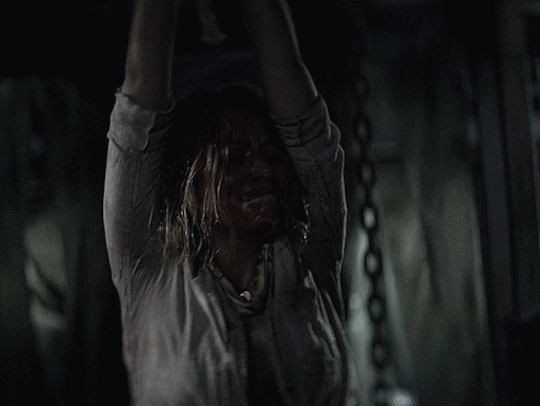
Sara, unfortunately, has no relief no matter where she goes. Not only is she bullied in her social life, her mother is a domineering, seemingly uncaring woman who speaks over her, bosses her around, and often calls Sara names herself. Her father does nothing, her younger brother only adds his own mocking. When it finally comes out that the missing girls bullied her extensively and called her “piggy,” her mother stands up for her until the minute they are home, where she feeds Sara a plate of salad and tells her the way to solve the issue for her to lose weight. It is intense performative care, going through the public rites of motherhood and then rescinding that care in private. Though she herself and her husband are also fat, it is only Sara who is deprived of the family meal, surely making her feel even more an outsider in her own home. She sneaks sweets and snacks when she can, she stress eats, she takes comfort in food, what little comfort it can bring, and her mother takes even that from her.

In Piggy, the desire to be seen and accepted transcends beyond normal social boundaries in the extreme. When Sara runs into the Assassin again, the two hide together, as she has continued to keep the secret of what she saw and what happened. They are close, face to face, staring at one another, his left hand over her mouth, a knife in his right. His left hand drops, and there is nothing more than a breath of space between them. It’s sexual, it’s tense, and, daringly, it’s romantic. Alone in the world, Sara clings to it, the only offer of intimacy she’s ever had.
Piggy is a fantastic and captivating movie. Often, killers are seen as attractive only after the movie has come out and some group of fans lay their hands on the subject, like Jason. Others, like Ghostface, are given a sexual nature that showcases their creepiness. Piggy has neither of those. The Assassin is not a particularly handsome man. His violence is brutal, unforgiving, and torturous; yet it is he whom our heroine finds attractive. What could be more evocative as maintaining such a tenuous and frightening relationship? Heartbreakingly, it seems to be the only positive relationship Sara has, or maybe has ever had. He may be evil to others, but to her he has only ever been silently understanding. The movie shows that her pain is profound, and that is what makes the situation believable.
The ending is a doozy, and one that should remain unspoiled, but you won’t be able to deny the anguish that comes from the battle between what is right but harder for oneself, against what is wrong but what one desires. What are people willing to forgive, to look past, when offered the right amount of attention and care? Where is the line drawn when those around you stand only to hurt and harm you, while the other stands to hurt and harm them? How much pain must be laid before revenge is justified? Will you cheer if the bullies end up killed? Piggy allows us to contemplate morality in a deeply personal and intense way. It strikes to the core. Who deserves to be forgiven? What would you, as a viewer, forgive? Bullies will always be a staple in horror, that won’t ever change. As long as there are underdogs, there are bullies. Bullies are there to be killed and for audiences to cheer at their death.
Piggy asks more.
It asks, if you were in Sara’s position, what would you do? How far would you go? And it never stops asking. It demands you to think, to feel, to fear.
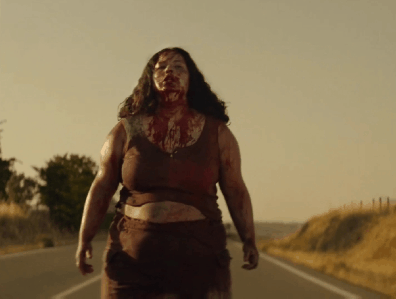
What made Piggy so great was that it brings to the focal point things that horror can overlook. It’s easy for horror to slide past morality or reflection or grief. Hell, it can even overlook pain, at least the emotional type. Piggy grabs you from the very first frame and never lets you go, making demands of you from the first minute. The dread surrounding the story feels personal and real; real young women and men truly do go through that kind of horrendous bullying. It’s barbarous, vicious, and deadly. Piggy confronts the audience with that and puts them through an emotional wringer of right and wrong, kind and cruel. Piggy is a movie that aches.
Well paced, well written, and well filmed, Piggy rounds out its strong story with a powerhouse performance from Laura Galán, without whom the movie may well have fallen flat on its face. The oily nature of the movies makes it slick and hot. It might not be the prettiest movie you see this year, it definitely won’t be the goriest, but there’s a tang and a grit to Piggy that will have you rolling it over in your mind for days to come. Piggy is a movie with weight, with staying power, and, most importantly, with passion. You would never guess it was based off a fifteen minute short film, as each second feels full and earned. Unlike other short film adaptations, Piggy doesn’t feel drawn, slow, or slipshod. It feels rich and deep, a staunch departure from the wafer thin story and writing that usually accompanies extended shorts. This was a story that deserved a full length feature, and the horror world is all the better for it having happened.
Impactful, stunningly acted, incredibly culturally and socially relevant, Piggy (2022) is a movie of its time and for its time. I can’t wait to see what director and screenwriter Carlota Pereda will show us next. 5/5*
#piggy#cerdita#2022#horror#movies#review#film review#spook study#writing#5/5#carlota pereda#my writing#movie review#horror movies#modern horror#Spanish#long posts about horror
55 notes
·
View notes
Text
I’m not sure how many people would qualify The Wonder as a horror movie, it sits itself quite prettily in the ‘period drama’ section of Netflix, but I’ll be damned if I don’t give it a fair shake as what I felt the movie truly was, and that’s a horror film. Normally I’d put an enticing gif here of something, but either the title is too vague or the movie hasn’t hit its stride yet, so unfortunately my words will have to suffice.
Right off the bat: the framing device is weird and I didn’t like it, so let’s choose to ignore it here because it proved itself entirely pointless and useless. It’s barely a couple of minutes at the beginning and end anyway. As if the movie wasn’t artsy enough with its popular gray washes and dirt and a sense of ‘naturalism.’ Head’s up: If you are looking for a colorful piece of cinema, look elsewhere.
The Wonder is an inverse exorcism movie. Not quite on the same level as the Shudder original Anything For Jackson, the term inverse is most applicable here, while Jackson is more reverse. The question of what that means is easily answered: Wonder isn’t about a demon, it’s about applying divinity to someone and wanting it to be there beyond reason. It’s characters wish to put Holiness into someone rather than remove, or in Jackon’s case insert, the unholy from within.
It is an intelligently made twist of the religious horror genre, and garners emotions of a different stroke. If we consider exorcism movies to be horror, then so too should The Wonder be considered horror. It plays on the same tropes, the same pace, the same escalation, yet does not view the phenomenon as of the devil, but rather of Christ.
This movie is horrifying. Perhaps it’s the fact that genre star Florence Pugh is in it, or that the whole cast is made up of experienced actors of genre across the board, but it’s unfathomable how anyone could see it as anything else. Set in the late 1800s just after The Great Hunger in Ireland, something generally accepted as the fault of the British, the plot follows Pugh as English nurse Elizabeth, or Lib, sent to watch and investigate whether or not Anna, a fasting girl who apparently hasn’t eaten for several months, is legitimate and ‘a wonder.’ To quote: “[They are] eager to see the wonder in every ordinary child.”
Her investigation is thorough, and without spoiling anything there were definitely one or two details that took me by surprise. Wonder places itself in the new age of horror, this age of what I prefer to call “emotional horror,” where fear is derived from character reaction, intense feelings exchanged, and the revelation of secrets. It is belief in this movie, faith, that are the chains that bind. To be frightened of someone’s faith, and of what that faith may mean, is certainly not a new idea, but one not usually applied to Catholicism or any derivatives of Christianity.
To the modern film, Christianity is the true ‘holy’ faith system. How often have we seen Louisiana Voodoo, or Judaism, or Islam put on the brutal chopping block of horror’s worser, racist tendencies towards faiths? Or villains? Black people, practitioners, Muslims, Jewish characature, Romani peoples, indigenous populations, all victims of the horror genre. But here we have an unspoken fear, universal all in its own right, but decidedly white and European. Unlike other pieces of Catholic horror, however, we don’t deal with devilish nuns or lesbian affairs or dancing in the wood at the witching hour. This movie is about belief, holy faith, and nothing devilish ever graces the text. It deals with the female self image through the illness of anorexia miribalis, which is exactly what it sounds like. While men are allowed to pay penance through self flagellation or other pains of the flesh, it was this way in which women were found to seek holy suffering.
It deals with literacy and understanding through Kitty’s plot, played by Niamh Algar from Censor, which I loved, and the abuse of youth and women. A nun is present to watch young Anna as well, but who is she to speak out against the parish priest? The question the movie begs is simple, yet answered easily enough. There’s a question of complicity. After all, “All over the empire, are not children left to die in ditches and gutters every night of the year?”
Fire is used as a purging thing, a holy flame, and the setting allows for us to naturally draw parallels to the burning of witches, and constantly makes reference to the eternal burning of Hellfire. You can hardly go a minute without the reminder that the ‘miracle’ girl Sarah is sure her brother is burning forever, and the mystery to why is definitely a hardy gut punch. Even if you read the film right, it’s still rough as Hell, pun intended.
The Wonder is smart that way, clever, slow. Very slow, at times. It builds, of that there is no doubt, but it wouldn’t have suffered 15-20 minutes shaved off. Much like we stare at Pugh’s ever-dirtying dress, the sound of Pugh’s feet plodding along through the mud can be rather indicative of the pacing. As mentioned, it’s a gray, almost bland looking film, alternating from overcast outdoor settings to dimly lit candlelight vigils. The use of lighting is, thank god, meticulously designed, which feels like a dying art in this day and age. You can see, but you can also not see. And such is the dichotomy not only of the visuals, but of the concept of the holy spirit. It makes the viewer question who is right, and who is wrong. Darkness so often represents wickedness, or even two facedness. But does it here? Or is it those who are seen in all their glory who are the evildoers? Those who hide in the shadow versus those who are bathed in light.
If you like religious horror, this is a movie for you. If you’re new to religious horror, this might be a really great starting point. There are no jump scares, no gore, no demonic possession. Just plain old human dread. I’ve always liked the feeling of dread in my horror.
Completely pointless framing device aside, The Wonder was a good, if jammed movie that was just a little bit too long. There are a lot of things to think about here; probably being worth a second, or maybe even a third viewing, depending on your taste. The acting was sublime and did in fact live up to the promise of the opening monologue that every character on screen truly believes what they are experiencing is real, an astoundingly bold claim for a horror movie, a genre not exactly known for its groundbreaking performances. Still, there is not one performance, not one moment that fell flat, or felt unbelievable.
Shortcomings aside, it is still worthy of a definite 4/5*
#the wonder netflix#horror#film#movies#review#spook study#writing#4/5*#The Wonder#the wonder 2022#movie review#my writing
29 notes
·
View notes
Text
Daughters of Darkness is a beautiful erotic gothic lesbian vampire thriller. Yes, you read that correctly. You know a movie is going to be a fun watch when the first thing you see is sex between a couple bathed in that classic surrealist blue- not unlike one might see in Italian Giallo counterparts of the same era.

Belgian director Harry Kümel let’s you know right at the beginning that this film will be sexy and weird. The unnatural coloring gives it an ethereal quality that the rest of the movie definitely lives up to. It entices you with ideas, with little glances of vice, with touches of the erotic until you are practically begging for more. The steady and sure pacing is all the more torturous as the movie goes on and you wait for the climax that you know is coming.
The 70s were known for this brand of hot-and-bothered horror, blurring the lines between violence and orgasmic pleasure, and Daughters of Darkness is no exception. While traditional Giallo may offer its viewers the sexual metaphor through black-gloved killers stabbing their victims- usually women- in what can only be described as juicy, cries of pain sounding just enough like cries of pleasure to make one feel just a little bit dirty, surreal or supernatural horror has little use for black gloves. The sex is sex. The seduction is seduction, and the spells and thralls victims- men and women alike- fall under are insurmountable. They will succumb. The weapons are words, sweet and sinful words of suggestion. Unlike slashers, the only way to win in a battle of otherworldly desires and fears is a triumph of will. But when you’re being seduced by Vampress Countess Elizabeth Báthory (yes that Elizabeth Báthory) so clearly modeled after Marlene Dietrich, would one even want to escape? One night would be enough. One night is enough.

Lesbian horror deals in pleasure absolute. It entices the viewer with the voyeuristic idea of women, without the presence of men, giving each other untoward satisfactions; devilish pleasures. It’s taboo, wicked, evil, and delectable. A vice a woman, in this case our heroine Valerie, played with doe eyed care by Danielle Ouimet, must escape from- if she can. She’s only just naïve enough.
The events of the move lie solely at the feet of the husband, Stefan, portrayed by John Karlen, who you might recognize from his time spent on the original run of Dark Shadows. If he hadn’t given into his fears of introducing his bride to his family, the newlyweds would never have found themselves caught in a practically deserted grand hotel in the middle of the off season. The fact that he has left Valerie in the dark regarding his sadistic fantasies and obsession with violence only adds fuel to the fire- suddenly, Valerie finds herself alone against those who would, quite literally, consume her. Stefan is an easy target for the Countess Báthory, as her past deeds arouse and enthrall him.
Delphine Seyring as Elizabeth Báthory is a woman who doesn’t think she’s seductive, beautiful, and sexual, she knows it, and that only makes her all the more attractive. She’s nothing short of captivating. The bright red lip, oh so kissable, draws not only her victims, but the viewer into her undeniable thrall. Her red fingernails draw attention to her hands and her long slender which we know can do so much. Her lover, Ilona, as portrayed by Andrea Rau, is a clear nod to Louise Brooks, and their beautiful dichotomy is a phenomenal choice on the director’s part. The innocent look of Ilona only makes her fruitless efforts to escape her Mistress’ clutches all the more tragic, and her jealousy is bred of insecurities the Countess purposely feeds. While we first meet our newlywed lovers awash in blue, Countess Báthory and Ilona are immediate washed in luscious blood red; immediately relating the two women as a dark parallel to our heroes. They are sleeping together, fucking, and the director wants you to know from the moment you see them together. He wants your mind to fill in the blanks, as censors of the time most likely didn’t allowed him to show much more than the suggestive touches we are offered from our lesbian relationships.

The first time the four are together, the color palette is just to die for- in this case literally. Valerie in a beautifully tailored black suit, Stefan in starch white, Ilona in that same black as her female counterpart, and the Countess in sheer, devil red. The costuming tells us clear: Valerie and Ilona are the same, and both are and will be the Countess’. The color palette and cinematography are orgasmic in their own right; I gasped in sheer delight a few times over composition of the film. And, of course, after Stefan’s encounter with the Countess, he immediately changes into that same rich, delicious red- he is already hers, and his fruitless efforts to make love to his wife lack the sexual violence the Countess Báthory so carefully awoke in him as she whispered in his ear, lips brushing just the shell. He, in the course of one conversation, is lost.
For a movie made in the 70s, it’s rather frank when it comes to handling the idea of pleasure as an entity different from that of sex, and the failings of men and how they objectify women. Báthory, luring her young prey further into her trap, expounds after a violent confrontation between the newlyweds- “…Whatever [he] demands of you, do you consent to do it? Yes, naturally, but you don’t feel any pleasure.” And the Countess has no intention of letting her go, pushing even further the more Valerie resists, a fly that doesn’t know she’s been caught in honey.
At the end of the day, Daughters of Darkness is a movie about hidden desires, pleasure, love and the lies we tell ourselves. It’s a movie about realizing a woman is her own person, and she doesn’t need a man in order to exist. It’s a warning, in a way, to men. Be careful- she doesn’t actually need you. If you’re looking for a beautiful way to spend an hour and forty minutes, look no further. Critical of men and their violent desires, of their weakness, it’s a good, if a bit silly movie. But sometimes it’s just nice to be able to sit down and watch a movie populated by women and see the man be the weakest of them.

The one true downfall of the movie is the trappings of the time- the deaths are, for lack of a better term, jokes. Wholly unrealistic and silly. There are plot holes, things left unkept and unresolved, but at the end of the day I don’t feel it really matters. It’s a movie of suggestion, so let it suggest. It benefits from being European, as most shortcomings can be lumped into the lovely umbrella non-American filmmakers get to use- “artistic decisions.” Still, it’s fun, and I didn’t regret my time spent.
All in all a fun little movie, if a bit thin in the middle, Daughters of Darkness gets a steady 3/5*
Extras:
Best Line:
“…He dreams of making out of you what every man dreams of making out of every woman: a slave, a thing, an object for pleasure.”
Best Death:
A crystal glass bowl splitting in half and magically cutting the wrists of the victim.
Gold Star Award:
Hand foreplay.
#my writing#horror#daughters of darkness#1971#review#movie review#film#movies#writing#wlw#vampires#70s
13 notes
·
View notes
Text
There are certain movies, as fans of film, that people go out of their way to watch just to say they’ve watched them. There’s no shame in it, and certainly everyone wants to be able to say they’ve seen, Citizen Kane, for example. Movies that have something akin to passive interest; known to be good, famous, on lists, things like that. Great movies, beautiful things, and maybe movies you might not have watched if it wasn’t one of those movies.
This is particularly true for horror fans, who will absolutely go out of their way to see something they heard of, and heard was good. The problem with this is often, when a horror movie is “good,” that simply means it has wide public appeal. We can all attest that some of the best horror out there, and indeed maybe the best horror happening right now, is released on midnight labels under severely limited release. It’s part of the thrill of horror that we must go completely off the beaten track to find what the genre has to offer.
Discovering this phenomena in horror is particularly impactful, as the list of horror films that hold cultural value is actually quite long, though incredibly specific. The recipe is artistry, creation, and an element of the never-been-done. Suffice to say the moment I got my hands on horror, I dug in to those slightly off-center movies often just to say I’d seen them.
That is how I watched Carnival of Souls (1962) for the first time.
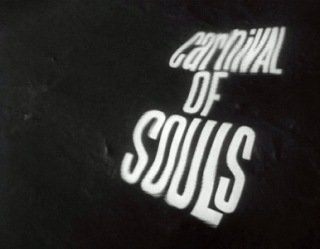
This was a rather long introduction because when I first watched this movie as a teenager I was absolutely and utterly bored. I didn’t see anything particularly noteworthy, it wasn’t very frightening, and the plot felt slow and nonexistent. Not to mention the fact that it was just so obvious she was dead the whole time. It felt bland and uninspired.
This is the trap one can fall into when seeing something to say you’ve seen it. Particularly when viewing something as a young adult or teenager. I remembered not liking Carnival of Souls, remember rolling my eyes, but time has passed and so too has my heart and mind evolved. New things come with age, new experiences, new thoughts. The more you see of horror, the deeper into it you can become, and the more point of reference you have, the more you can take a movie into true account.
Carnival of Souls is truly and wholly unique. Melancholy, confusing, and yes, even frightening. There is a hollowness to it, an aching yearning, a divine solitude that is shown in every moment, in every frame, in every word of dialogue. Fear is not something to be contained to jump scares and monsters, and Carnival doesn’t need any of that to settle heavily in your chest. It’s unsettling, and manages to be unexpected at the most perfect of times.

The simplicity of effects does not detract, but rather adds to the tone of the film. Mirror images, stalking ghostly men, pushy sexual neighbors, each moment of our protagonist’s life is uncomfortable in so many different ways. Mary, played with absolute aplomb by Candace Hilligoss, is maybe one of the most unsettling character in the movie. She is quiet, cold, a church organist without faith. But at the turn of a hat, she is scared, needy. She yearns to be absolutely free of outside influence, or so she says. She has no friends, no lover, and is apparently fine with that. It seems she enjoys her detachment.

She is, of course, struggling with hollowness. She is devoid of a soul, it is only her body that is walking about. The moment the viewer comes to this realization, the better the movie will become. Because it no longer is a matter of if the ghosts will get her, but when. They are hers and hers alone; demons from within her mind. She is unnatural, and so too must her removal from society be unnatural.
For those who have ever suffered from mental illness, perhaps most notably depression, Carnival draws a straight line deep inside to those hollow feelings, the bone deep confusion, the sense that something is wrong within. This is a movie that is spoken of an remembered not just because of its stunning visuals, but because it is a true exploration of loneliness and isolation. We feel for Mary, we fear for Mary, we are frightened of Mary.
She walks most of the movie alone. Her mind flees this way and that way. One good moment is followed immediately by a bad one. How jarring and confusing it must have been to see something like that on screen in the 60s. Full sequences where she seems to flit in and out of reality, seen and then unseen, heard and then unheard, lively and bright and then stoic and cold. The dichotomies this movie employs are powerful, age-old fears and realities. And each moment is given its true due. In fact, it doesn’t feel like the movie has a stable escalation, perhaps why it may be difficult at first to grasp. It simply exists. Much like Mary herself, the movie almost dispassionately shows the events in such a way that it feels the viewer themself is participating in her agonies. She yells out to be seen, to be heard, for help, and none is given. Nor is anyone watching able to offer it.


How does one handle things when each manifestation of your fear, each ghost you see is from within? No one else can see them, you cannot fight them, and they will come. The loneliness is after you, the hollowness is after you. Mary may run and run, but instead of fleeing, she is unable to go. And is drawn back to the space, the root of her current fears, as though she is caught in a gravitational pull. All the struggling in the world will not save her. She needs someone to hold out a hand, and none are willing. How frightening, how horrible a fate.
Carnival of Souls is unlike anything you will see. A Bergman-like nightmare with timeless sensibility, powerful visuals, and an emotional powerhouse of a movie. If you haven’t taken a second look lately, or maybe have never seen the movie before, I truly, truly cannot recommend it enough. Take a look, a steady, hard look away from your phone and distractions, and get wrapped up in a new feeling and a different kind of movie.
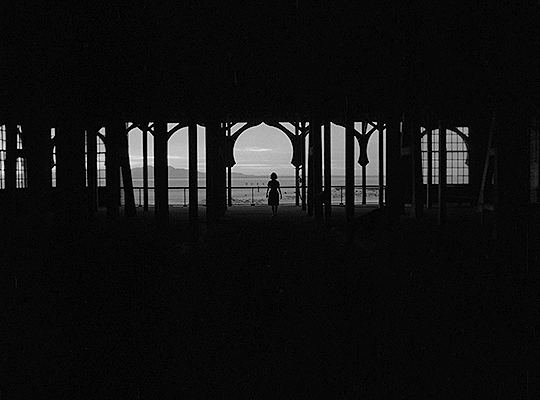
Not to be disregarded as just some movie, a Criterion film, or overblown by non-horror fans as an acceptable horror (or not horror at all), Carnival of Souls gets a resounding 5/5
#carnival of souls#1962#carnival of souls 1962#horror#film#movies#review#spook study#writing#5/5#movie review#film review#my writing
6 notes
·
View notes
Text
It makes sense that Barbarian (2022) was a movie written by a comedian: it “yes, and”-ed itself to death.

There are so few movies that come out in the horror sphere that really give you a sense of surprise or shock. Not to say that horror isn’t surprising or shocking- on the contrary. But being such an established genre, it is an exciting day indeed when you can sit down and watch a new horror movie that absolutely gob-smacks you.
Usually.
There is a scene in Barbarian where genre-fave Justin Long’s character and worst person alive AJ is at a bar with his friend and they have “real talk, bro.” The scene is horrifying in its own way for reasons you’ll understand when you watch it, but that seems like it might be an accurate nexus for how this movie came to be about. Barbarian played out like a group of drunk guy friends started a horror movie idea together, and then each one adds another thing, and another thing, and another thing, and another thing, and on and on and on. The only rule of the game seemed to be surprise. Never mind if it had narrative impact, and never mind if it made sense- why not have five movies in one? In fact thinking it over, I think five might even be too small a number.
What started out as a wonderfully and pointedly tense thriller that might have had a lot going for it devolved completely for the sake of shock. Not that it didn’t have its benefits, mind you. There were a few moments of writing that felt incredibly well earned and perfectly timed to ease forty-odd minutes of continued suspense. It isn’t the first time we’ve seen a split narrative in a movie, and it was absolutely effective. The conviction of the performances lent to the idea beautifully. Georgina Campbell as Tess was the final girl, Bill Skarsgård’s Keith was perfectly cast as someone who might be a good guy, but might not be.
The conceit of the film may truly well be every woman’s worse nightmare. In fact, I watched it with a friend and the moment Keith opened the door, we both said as such aloud. Absolute props where they’re due, the first portion of the film was delectably tense. I was squirming, heart pounding, I loved it. It was potentially the longest string of red flags ever put to film. My stomach was completely in knots. This was a masterclass on how uncomfortable you can make a viewer simply by telling them they are watching a horror film, and not a romantic comedy.

Picture this: woman is in town for an exciting new job interview for a documentarian she loves. She’s just kicked her shitty boyfriend to the curb and pulls up to the Airbnb in the rain. But uh-oh, someone’s already in the house- a boy! He invites her in and lo-and-behold, he’s someone who she might like to interview for the documentary, if she gets the job! Coming soon to Lifetime Movie Network. Except we knew, of course, that we were watching a horror movie. And Tess absolutely knew she might well be living one. We just didn’t know what kind. Never has the knowledge that the audience is watching a horror movie been used to such effect. I ate it up.
Then the movie had to actually start to explain itself. It feels like an impossible task to explain how quickly this movie went from 100 to zero for me. So much so that I believe I can peg it down to the minute that the decline began: minute 42. Perhaps it was the writer/director’s need to pursue shock above all else, but the slipshod back half of this movie really spoiled what might well have been an absolutely excellent short film.
It was shot well, with an absolutely stunning lighting design. I could practically feel myself drooling over the way this movie looked at times. The use of lighting design in horror is a rather hot button issue these days, but Barbarian knew where to stay dark and what’s more, it earned its darkness. While some of the dynamic camera work wasn’t my favorite, I’ll never be fond of what I call ‘video game’ camera angles, the vast majority of the film was an absolute pleasure to look at. Perhaps my favorite thing was that quite a lot of the movie was warm, favoring luscious oranges and yellows over the cool blues that are swamping the genre right now. And there were splashes of color that were just delectable.
It was clear the filmmaker had a vision for horror, and in that regard the movie was an absolute success. There were jump scares that were so wonderfully executed, and moments where a slow reveal was used to far more effect. But all these skills and all the tools brought out to play in Barbarian felt wasted because at the end of the day, it was nothing more than a shell.
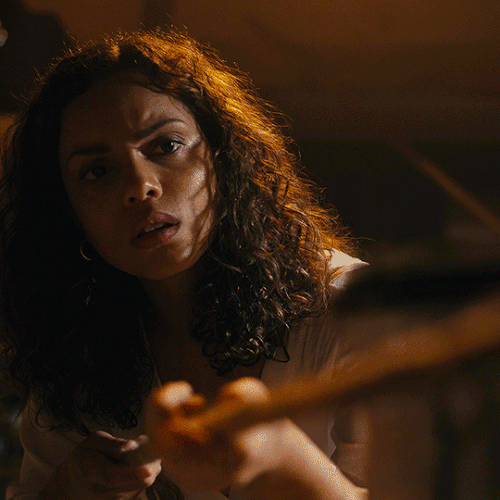

We know that shock is a noble pursuit in horror. It is foundational to the genre and is inextricable from fear. It’s something so exciting and thrilling to participate in. For some of us, it’s the very reason we watch horror. Why we ride the roller coaster. Why we play Bloody Mary. Whether it be a jump scare or the bone deep feeling of dread and disbelief, you simply can’t have a good horror movie without some well supplied shock.
But you can’t bank an entire movie on that, it becomes something clownish. And that’s exactly what happened with Barbarian. Each step only became more and more absurd to the point where the movie became a joke.
Barbarian had no rules, no reason. It didn’t ‘throw the rules away,’ there just were none to begin with. It just was and was and was. And hey, that’s a type of horror that’s definitely has a place and is something people love. If you’re someone who needs a consistent string of “what the fuck” moments in their horror then good news: Barbarian is absolutely the movie for you. But for people who might prefer something deeper than surface level, it might leave you wanting. It felt like an all-you-can-eat buffet. Sure there’s everything you could want, but none of it is very good, and depending on your constitution you might have an upset stomach at the end of your meal. You ate, you feel full, they had your favorite cake!, but you don’t really feel satisfied.
At the end of the day Barbarian felt like a total let down. My heart was racing, it ramped me up, it was well acted, well written, well directed and for the most part well shot. The greatest misfortune was that it just kept going. The astonishment went from eyebrow-raising to eye-rolling. I went from “what next!” to “now what.” I was told I was getting a roller coaster, what I ended up with was a fair ground slide: after the initial drop, nothing was left.

I really wanted to like this movie. The main characters were at once completely sympathetic and revolting, real life smart and horror movie stupid, tragic and comic. But don’t press your hand to hard against any one part of it; you’re liable to fall right through and reveal there’s nothing underneath the surface. There’s more to horror than the shallow offerings of this and that issue that Barbarian presented it’s viewers. It was The Great and Powerful Oz- mighty, frightening, and then nothing but a cheap façade, not scary at all. I can’t quite put my finger on how to describe it, but in a way it felt like a slap in the face. Like someone sat down and wrote out a list of “scary” things and didn’t really consider why they were scary, or what they felt about that. It was strangely passionless.
Horror is always best when creators have something to say, when they have pinpointed something in the world that is frightening to them and decide that piece of fear is worth thinking about, worth exploring. It’s arguably the most culturally relevant and artistically impactful genre of all, providing metaphors for the day, for fear, for humanity and for the world. And it might be over said, but horror holds up a mirror to life and the best horror interprets real life fears so we may feel catharsis. What did Barbarian have to say about the world? That it existed? The movie felt like a monkey at a typewriter trying to trick you into thinking it had something to say. I like my horror to have a strong idea behind it, for it to really sit with something and question how it’s frightful, to find something to interpret and do everything to explain the unexplainable. This movie was not that; no matter how much it wanted to you think it was. It’s very clear this was a movie that thought it was genius, when it hadn’t even hit the gifted class.
All shock and no substance, Barbarian gets a rather disappointing 2/5*
#barbarian#barbarian 2022#horror#film#movies#review#2/5*#spook study#writing#movie review#my writing
12 notes
·
View notes
Text
Desi, what do you know about…witches?
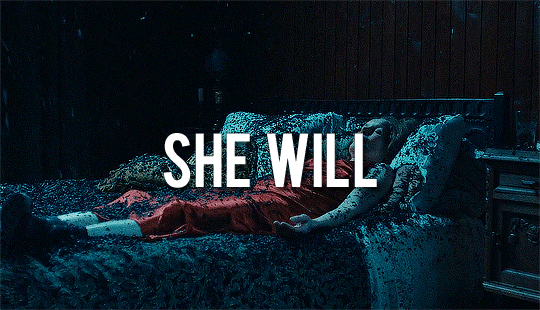
Harkening back to the lurid look of 70s European horror without leaving any modern sensibilities behind, She Will (2021) adds a much appreciated dose of technicolor mayhem to a rather monochromatic time in horror history. Combining the very same grey tones and foggy scenes that plague modern horror cinema with the heightened psychedelic reality of grim fantasy, it’s not difficult to understand why the likes of Dario Argento felt confident enough to sign his name on Charlotte Colbert’s first feature film. Wait for the dreams, they’re well worth it.
It’s not often the first outing of any director, let alone horror director, has a such a well respected name attached to it. The dreamlike quality of the narrative and the sometimes overwhelming level of inference over depicture smacks of Giallo, and of Argento in particular. Witches are old hat for the horror veteran, and She Will felt like a valiant effort in the continued tradition of witches as a source of influence over women and reality. Or at least, our perception of reality. Told with an undeniably female view, She Will may feel like it’s keeping a secret from some viewers. It’s “show-don’t-tell” delves deep into visual metaphor, and doesn’t give the audience much. At times, it felt like “show-don’t-show.” In fact, you might find something completely different than I did upon your own viewing. Maybe that’s the director’s intention, or maybe the blink-and-you’ll-miss-it plot is just too thin to support the framework of a sturdy movie that gives the viewer a bit more with the actual text.
At times, She Will felt almost like an endurance test, any given moment a toss up about whether or not I would walk away with something. Luckily, I absolutely did, and when we got there it felt completely intentional on the filmmaker’s part. While I did feel my fingers scrabbling for the kernels of a plot Colbert was giving me, at other times I let the splendor of the visuals wash over me and take me away to the foreign reality, to me at least, of the Scottish Moors upon which the film is set. Couple such clear and pointed hallucinatory storytelling with truly magnificent performances from Alice Krige and Kota Eberhardt and by the end, I didn’t much mind that I wasn’t 100% sure what happened. After all, it’s not a new notion that a high-concept small-script horror movie rely on its visuals, but rarely is it done to such excellent effect. Hypnotic and atmospheric don’t begin to describe the style of storytelling used throughout, and the unsettling quality of the visuals added value to an otherwise meager plot. It was restrained, and tense, but it didn’t feel boring.
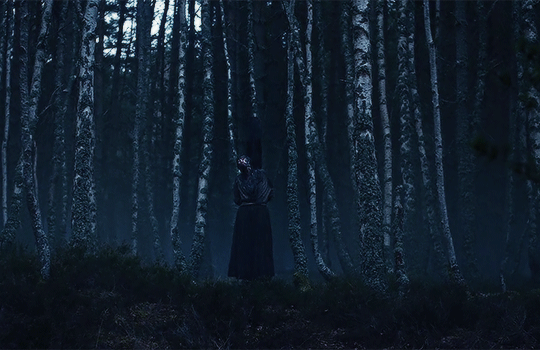

It can be rather easy to use witches as a sort of catch-all explanation for strangeness. Unlike other films of the genre, however, She Will uses them as an explanation, but not an excuse. There are rules involved that don’t allow for just anything to happen. In fact, the vehicles of the ancient witchcraft that was sowed into the earth aren’t sure what is happening themselves. It’s a refreshing take on the empowerment of witchcraft that those who are gaining that power don’t quite understand what’s happening to them, only that they like it. What’s more, they seem to understand what they are experiencing isn’t entirely good. Rather than fighting it implicitly, there is a choice made to pursue it. Even then, the witchcraft, which had damned so many others, isn’t damnable by nature. Rather it is employed as a tool that one can choose to brandish as a weapon or leave to rust. Life, death, and torture all have roles to play in She Will, and the subtly with which these immutable forces are used permeates through every minute.
She Will is a movie that will let you feel the mud between your toes before the blood runs through your fingers. Slow, steady, and purposeful, it’s a movie about sacrifice, loss, and generational anger so ingrained in the earth that it will find any outlet to release that frustration. Warped perception and strange dreams plague both aging actress, and recent mastectomy patient, Veronica Ghent as well as her put upon young caretaker Desi, whose name we don’t even find out until a good chunk of the movie has passed.
The connection and chemistry the two actresses share is palpable, and each aids the scarcity of dialogue with subtle and nuanced performances that touch upon generational divide, beauty, androgyny, and self loathing. They are incredibly intimate with one another, verging on romantic in some instances, and the relationship felt real and deep. With lesser actresses, I’m sure the movie wouldn’t have fared nearly as well as it did. Whether these women knew each other in a past life, or were always destined to know each other in this one, you never wonder why it was these two women who are sharing in the madness of witchcraft. It’s the magic that blends itself into their separate past traumas that finally allows an outlet for that pain. Toss in an incredibly brief but very effective couple of scenes from Malcolm McDowell as an (allegedly) abusive Kubrickian-type director responsible for some unsavory things in actress Ghent’s past and you’ve got a recipe for success.

Still, I wish there had been a bit more script. The visuals were so wonderful it felt like I never wanted it to end, but the astonishingly short 95-minute runtime made it feel like the director knew what she wanted to show, but maybe not what she wanted to say. I’m sure this isn’t the case and was only how I felt about it, but the text left me a little wanting. Like I had eaten my dinner, but I was still waiting on dessert. Director Colbert got her start as a photographer after all; this, above all things, makes itself known throughout the movie.
But what can I say? I liked it. It’s a movie that made me want to watch it again, and in the modern age of cinema in general, that can be rather hard to come by. It was ravishing, delicious. I couldn’t look away. It took me on a journey, and it was unlike anything else I had seen in what felt like quite some time. Witches can be such a tired topic, but the amount of mystery surrounding them and their history in She Will left enough to the imagination for both dread and excitement. I can’t wait to see what Colbert does next.
Absolutely and irrefutably beautiful, if a little short on plot, She Lives gets an well earned 4/5*
2 notes
·
View notes
Text
Long post about a movie up ahead…
You know what it was for me about the new Hellraiser? There was no romance in it.
There was no passion. No sweat. No grime. The desperation rang hollow. There was no dirt. There was no seduction. There was no appreciation for the beauty of filth and ugliness. It was just beautiful.
I feel like, nowadays, people are so concerned about people taking horror ‘seriously’ that any love that might have gone into it falls to the wayside. There used to be a visceral love for horror- not just the heightened aesthetics, but for the grossness. The getting dirty. The true disturbing quality of the human body as an object. The wetness, the juiciness, the blood, the grease, the fat, the flesh. People falling apart, hair undone, eyes wild, covered in sweat and tears. There’s a romance in that. A romance in the base form of humanity. In desperation. In fear.
No amount of beautifully made, consistency-accurate, color-accurate fake blood will match the way Kirsty looks in 1987 screaming “You want it? Fucking have it!” She is raw. She is frightened. She is angry and undone and she wants to fight. She looks like an animal.

That is the franchise. That. The human animal. When you watch Hellraiser 1987, it’s so clear that the people making the movie understood what they were making. Understood the beauty of the horrific. And yeah, that’s probably not a fair comparison, as the literal author Clive Barker was at the helm of the project. But that does even further disservice to 2022. And even with all the beauty 2022 captured, a clean, modern, painfully clinical beauty though it may be, there is nothing luscious or lurid about it. Nothing about the Cenobites seems particularly ‘forbidden,’ because they look like pieces of modern art. They have no enticement. I felt like I observed them with the same appraising eye one might cast upon a particularly lovely sculpture. I didn’t want to take a closer look, a grave and fatal feeling for a franchise like Hellraiser. I mean my god, when people talk about ‘sexy’ horror, Candyman and Hellraiser are often the first two names that get called out. This movie was not sexy. Not at all.
The surreal and fantastical were left to the wayside in favor of brutalism and realism. It leaves wonder behind, supplanting it with rote fear. The character’s lack of understanding is devoid of genuine curiosity. It seems the filmmakers fundamentally misunderstood that you can be filled with awe and wonder both in a positive way, and in a negative way. There’s no temptation. There are no trances. No dreams. You’ll never see anything like the premonition Kirsty had in 1987. Or the flashback romance scenes between Frank and Julia. That visual style of storytelling is gone.


The concepts behind 2022 were good. They had an interesting take on the lore, and to include a ritual to the Configuration was smart, and well done. But that eventually served only in detriment as well, as the entirety of the movie then rang like a ‘deal with the devil’ morality tale. It’s confusing in that way, as one of the iconic lines spoken by the original Priest (Pinhead) when asked who the Cenobites are is “Demons to some; Angels to others.” There’s an attractiveness to that. To them.
How is it possible, then, that the filmmakers seemed to forgo the angelic part of that quote? The 2022 Cenobites were beautifully designed, meticulously created creatures. The were beautiful. But the christian bible, and indeed many faiths across time all understand that to see something beautiful can be terrifying and frightening. One of the most commonly known snippets of the Bible, at least in the western world, comes from Luke 2:10, “But the angel said to them, ‘Do not be afraid […]’.” An angel, and the first words spoken are “Do not be afraid.” If one cast their eyes upon the unobstructed form of Zeus’ beauty, they would die. If one saw Anubis walk into a room, jackal head and all, it would be impossible to look away, but also frightening to the core. To see a god, any god, in the flesh is to be both terrified and excited. Those two feelings are inextricable.
Why is it, then, that no one is seeking the Cenobites out? Why does not one hunt for the Configuration? The very promise of the appearance of the Cenobites is the promise to take you to the furthest reaches of experience and sensation, when pleasure and pain can no longer be separated. To experience that which you could never dream of. To push the boundaries to breaking, until you exist only as a being of feeling, beyond and above even consciousness. So why does no one want to see the Cenobites?
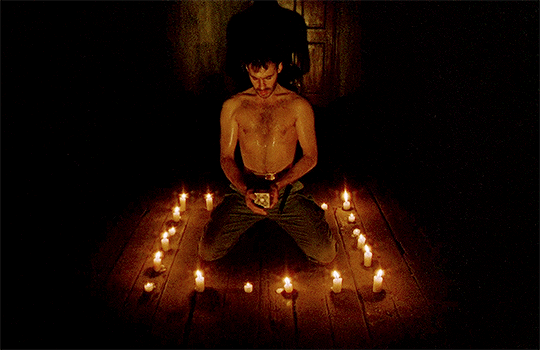
The issue falls to the framing device, which needn’t have been used to such ill effect. When you reduce those claimed by the Cenobites to sacrifices, you reduce the Cenobites to nothing more than pretty weapons. The lives the Cenobites take are offerings, stepping stones to an end goal. While the Cenobites may enjoy in their activities, there is no one seeking out to touch them. To reach them. Not the entity behind them. Those who wish to receive a gift from the Cenobites never truly interact with them. The gift is no longer the visit in and of itself. What sights have they to show us, when they are nothing but glorified weapons of their god, instead of gods in their own right?
And don’t even get me started on the coloring. Look, I know it’s very en vogue for things to be monochromatic and dark in movies these days, but my god where was the color?! Where was it!! The glimpses we got were not enough when 1987 is just so bright. And then, to make things worse, the Cenobites were shown almost entirely without obstruction. Just out there in the open, for the most part, albeit in the distance and shown briefly. No illusory quality to them. I know I don’t want a closer look when I can see every detail of them the first time. That’s a person with pins in her head, that one doesn’t have eyes or a face, that one’s neck is one huge gash, that one’s in a skin straight jacket. I know because I can see it. I’d surely run if I could see that right off the top. Gone is the sense of ‘oh my god, oh my god, what was that?’ I get your designs are strong, and really very well made, but don’t just give it to me. Let me want it a bit first. Tease me with it. With them.
On top of that, the reds aren’t as red. The blues aren’t as blue. The color shift felt virtually nonexistent between the Hellworld and the real one, and neither reality is particularly vibrant. You’ll never see as intense a contrast as you hope to see. People being stabbed, ripped apart, torn by chains, flayed, all these things look wonderful, but just too real. Why do I care if your red is tone-accurate when your reference looks like a technicolor nightmare in the best possible way?


The drama! The unrealism! The intensity! The Cenobites are not of this earth. We call their realm ‘hell,’ but you could just as easily call it a parallel or alternate dimension. They simply exist. There are so few properties with a strong enough foundation for the only limit to be your imagination, and unfortunately it felt like this new Hellraiser was want of any. I don’t want your anatomically correct muscles and perfectly researched disfigurements, I want unreality. Give me fantasy, or don’t bother.
I say all this with the heaviest of hearts. The Priest was well designed. The Cenobites, and there were quite a few of them, all had potential to induce desire. They just…didn’t. It just felt like no one understood. Like no one would think twice about whether they wanted to see the Priest- of course the wouldn’t! And god, did that show. I think at least someone working on a Hellraiser property should be able to see the desirability of the Cenobites, the tantalizing nature of the taboo, the socially outcast.
Clive Barker was a gay man who released The Hellbound Heart in the 1986, and the original Hellraiser film in 1987. This was the height of the AIDS epidemic, when gay men were seen as disease, not just carrying disease. Monsters. Predators. Animals. They were laughed at and scorned, and treated as so much less than human. Treated like they deserved their fate. Their tragedy was the butt of everyone’s joke. Yet, those very people were still wanted under the cover of night. Still desired. How is it possible this new team missed the mark so entirely? How could they not understand that when one’s very desires are deemed deviant, when your nature is seen as repugnant, unnatural, criminal, one eventually comes to a place where those words become badges of pride? Of a way to differentiate yourself from those who would wish you dead? That idea didn’t make its way to Hellraiser 2022.
We never got to a place that said, Yes. Yes they are deviant, and repugnant, and criminal and damned. They will drag you down with them into endless agonies. Not a single person will be able to save you. You think even touching them will kill you. And you still want them.

All the makings of an excellent new Hellraiser were there, but nothing was enough. Colors, editing, acting, story, beauty, fear, dirtiness, sexiness (jesus god there was no sexiness), it all came up short. They weren’t brave enough to explore the further regions of experience.
Clinical and devoid of passion, Hellraiser 2022 gets a heartbreaking 1/5*
84 notes
·
View notes
Text
Long post talking about a horror movie up ahead.
-
-
-
Martyrs (2008) is a movie that’s been analyzed to Hell and back (pun intended) but I think the idea that you can artificially create a martyr is a completely fascinating thing to be explored in film, and in horror specifically. Horror is violent, and does martyrdom even exist without incitement by violence? People talk about this movie as a masterpiece, as shocking and raw and horrifying, all visuals and effects and awe. That’s talked out. But I feel I’d like to go into the concept which the movie is founded upon and titled after: martyrdom.
Martyrs is surprisingly slow, for being as iconic in the horror community as it is. We’re not exactly renowned for enjoying taking things slowly, but the Pascal Laugier knows how to write a hook. Martyr’s is instantly engaging and demands your attention. The opening shot is a stroke of genius, riveting and frightening. It’s a movie that’s impossible to look away from, it compels you to watch. At just over an hour and a half long, the pacing is pointedly deliberate for a movie as short as it is. Fear comes slowly, settling in after the shock and sinking lower and lower into your stomach until there is only dread left in you. Dread and sorrow. It has an air of inevitability about it, even if you are unaware of the ending, that reminded me of a Greek tragedy. There is only one way the story will end, and no matter how you wish it there is no changing it. There will be no escape. In this way, as a launching off point, I’m compelled to think artificial martyrdom. Of destiny, fate, and the immovability of the Christian God’s Plan.
It is, in my opinion, a movie about hubris. Man’s thirst for knowledge of the great beyond has driven this whole strange religious cult, if you could call them religious, into such violent and unimaginable extremes that one hesitates to consider them having any faith at all. They do not seek clarity from God, they do not seek clarity from the passion of True Faith; they wish to seize upon and steal that clarity. It is reminiscent, in a way, of the Tower of Babel. They’re chasing something intangible, something beyond human comprehension. One could liken the knowledge martyrs receive upon those final moments to Semele looking at the true face of Zeus, only to perish at the sight of him. They must die; the human mind could not endure the revelation, as evidenced in the movie.
The way the concept of martyrdom is set up happens so quickly, and in what I considered to be such a blithe way, that the cult’s dedication to their ideals is seen as crazed immediately. “Look at her eyes. Look at her eyes.” It is instantly insincere and fanatical. By virtue they are unworthy of the knowledge they seek, and will suffer for reaching out to touch that which no human hand should deign to touch. Adam himself may extend his desperate hand, but even Michelangelo knew he would never reach his holy Father. We are shown a book of pictures, young woman after young woman, with an apparent look of enlightenment on their faces. We are led to believe by the Mademoiselle that these women, through their agony, have seen the face of the Christian God, of the Beyond, and have obtained a truth that she and her cult seek to have. She even goes out of her way to mention those women who are atheistic and who she still believed to have reached this state.
Yet we never see a bible. We never see a crucifix. We never see any religious imagery, nor do the members of the cult even wear crosses themselves. In fact, the movie being bereft of such imagery is a clearly intentional decision. They do not seek to be granted God’s gifts, they do not even consider the knowledge Holy. They want to have their cake and eat it too: they do not want to suffer, they want the results of Holy suffering. They want to burn the martyr and be granted the Holy knowledge thereof. To slaughter the sacrificial Lamb of God and take the flesh from the altar. They are pursuing sacrilege not in God’s name, but in the name of knowledge. A knowledge that can only be granted by a God whom they seem to ignore.
If we pursue the religious aspect of the film further, and we assume Christianity and Christian martyrs are the foundation for this groups fanaticism, then we must also assume that martyrs and martyrdom are destined by the Christian God. You cannot create a martyr. Martyrs are preordained; chosen and touched by God Himself. It then follows that martyrdom, and the creation of martyrs, are moments in His plan that are free from the influence of human choice. These people were not created by human influence, by the hands of man; it was their destiny to live and to die with transcendental suffering. While human beings may have inflicted that suffering, those actions too are preordained and immovable in the wheels of time. But the idea of martyrdom being a thing inflicted upon people by man, rather than a manifestation of God’s Plan on Earth, creates the illusion of choice for the cult to cling to.
If one only assumes martyrdom to be bred at the hands of suffering, it is no wonder, then, the cult is unable to falsify or create a martyr that will grant them the information they seek. How could they possibly, when a martyr must die with His Intention? They see humanity as making martyrs for themselves, rather than something martyrs are doomed for by God.
By definition martyrs must suffer and die for something, for someone, for an emotion or belief or thought. How humanity chooses to inflict such suffering is their own, but it cannot be mistaken for true creation. This type of creation belongs to God alone. Martyrs, if we follow this logic, are born to die, born to transcend, and born to see that which the rest of humanity has never laid eyes upon. They achieve revelation through God’s Plan, and through Him only.
It’s strange the Mademoiselle only shows photographs of modern women achieving what this cult perceived to be an elevated or enlightened state when Christian imagery is full of such visuals in paintings across time. “The Christian Martyrs Last Prayer” by Jean-Leon Gerome, “Saint Sebastian” by Andrea Mantegna, “Joan of Arc” by John Everette Millais. A google search of paintings of Christian martyrs turns up page after page of martyr upon martyr painted from hundreds of years ago right to the present moment. Where are these images in the cult? Why are they absent?
Their detachment from the idea of enlightenment as a religious experience means such images of true Faith have no place in their ideals, in their machinations, or in their hearts. They are vile not only on a human level, for willingly inflicting unimaginable agonies upon woman after woman, but also because what they mean to achieve is a affront to God. They try to fabricate martyrs, to engineer them. They are blasphemers desecrating the very idea of martyrdom in what one could consider to be on the deepest levels of degradation. They boil down the suffering of men and women who died for their faith, who died for their country, who died for God, to nothing; they make those ultimate sacrifices meaningless. These, who are so pure of conviction that they would rather die then renounce their beliefs. Their motives aren’t part of this group’s theology, their intentions and feelings are made irrelevant. The cult stands for nothing, and is a hollow shell of rot and wickedness.
The perceived martyred women in the photographs, as the cult seems to have latched onto the idea of female suffering having a stronger inclination to achieving enlightenment, are seen not as people touched by God, but as blueprints. Religion has been abandoned by the group and has no place within their beliefs. Why else would they seek such knowledge? Surely, if their sect was as founded in Christianity as one might assume, they must already know theirs souls have been damned for eternity in Hell. Is such knowledge worth it? Would Adam and Eve choose not to eat the fruit if given another chance? Or would they, driven by a desperate need for knowledge, fall and fall time and again. Is knowing before worth the eternal damnation that will follow? Or have they truly disconnected martyrdom from God so much that they do not believe their actions will have consequences?
In this way, Anna was not created a martyr by this cult, she was born to be one. Born to be this one. Born to suffer at the hands of her mother. Born to suffer in deep unrequited love and empathetic anguish for Lucie and her pain. Born for the horror and death and heartbreak following the events in the Belfond home. Born to discover the woman being kept there, to care for her and weep for her, to be unable to save her, born to watch her die. She was born to be taken, and born to suffer. These events were preordained, and have always been engineered by the Hand of God. The events of the movie are fated. Anna was born with the blessing and curse of martyrdom. Her transcendence and obtaining of final and true Sight was always hers to have. This cult had failed to create the martyr they sought not because the suffering the women endured was undue for martyrdom, but because the other women victimized by the cult were simply not born to be martyred. Anna is, according to the cult, the fourth martyr they have “created,” yet she is the only one their work has brought to fruition.
One then wonders, why Anna? What has Anna suffered and died for? The answer to this question is, in my opinion, supplied with perfect clarity: Anna has been martyred as a tool for the Vengeance of God. She is a weapon against those who wish to steal from Him, those who wish to take what belongs only to Him, those who wish to create what He alone is able to create. The cult is sacrilegious, blasphemous, and their very existence flies in the face of God. Anna’s martyrdom, and her ability to communicate the visions He showed her, were acts of Divine Retribution. We do not need to know what Anna said to the Mademoiselle, it was never ours to know. We need only know that what God showed to Anna was intended to kill the Mademoiselle, to destroy this cult for its desecration of the work of God, and, as was always destined to be, He succeeded.
So what is a martyr? The movie provides a definition as the final shot: a martyr is a witness. I believe it is up to us to decide what that truncated definition means. Are they witnesses of God’s Glory? Are they witnesses of the Beyond? Are they witnesses of the true face of man? Or do they finally witness that which is truly unknowable: the expanse of time, of life, the endlessness of eternity, the great fears and glories, the face of Death, the fury of God? Do they see what lies beyond is true nothingness, and that death leaves you abandoned and meaningless? Whatever it is, I am happy that we do not hear what Anna says to the Mademoiselle, because I, for one, don’t want to know.
And if this movie has told you anything, it has told you that you shouldn’t want to know either.
38 notes
·
View notes